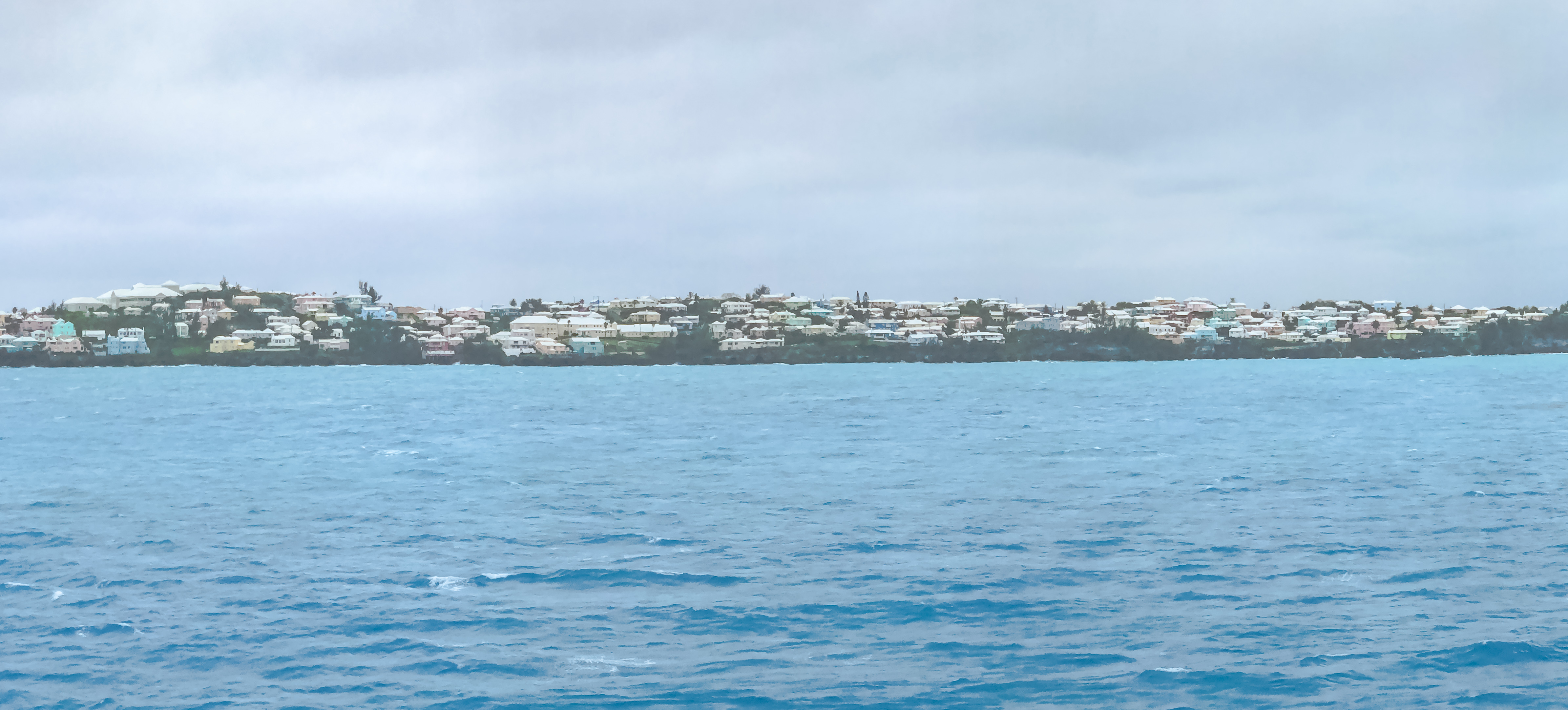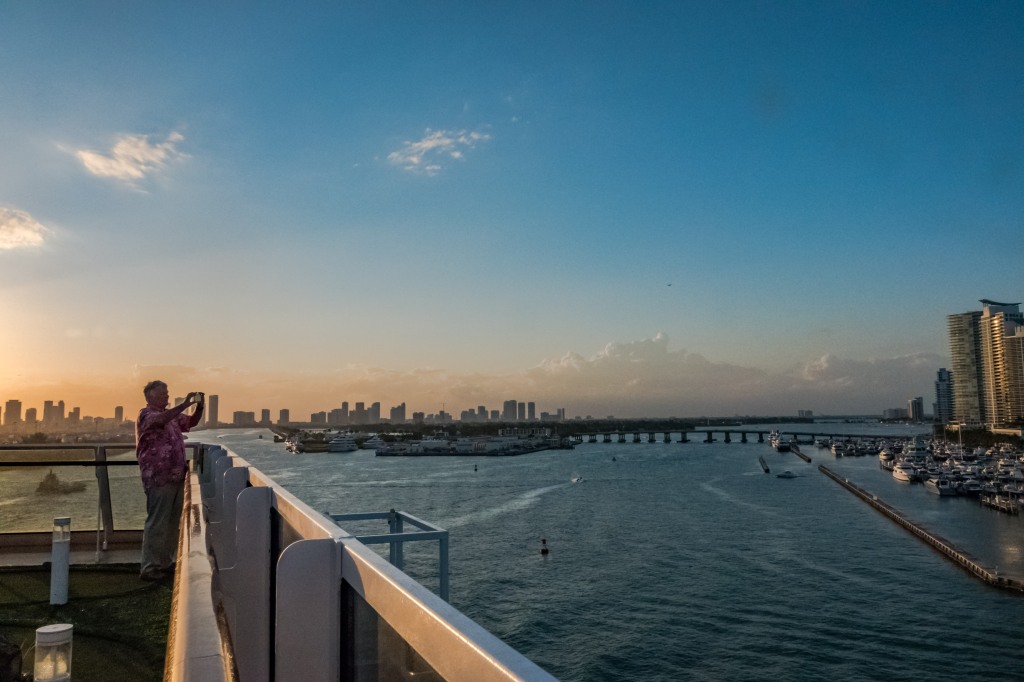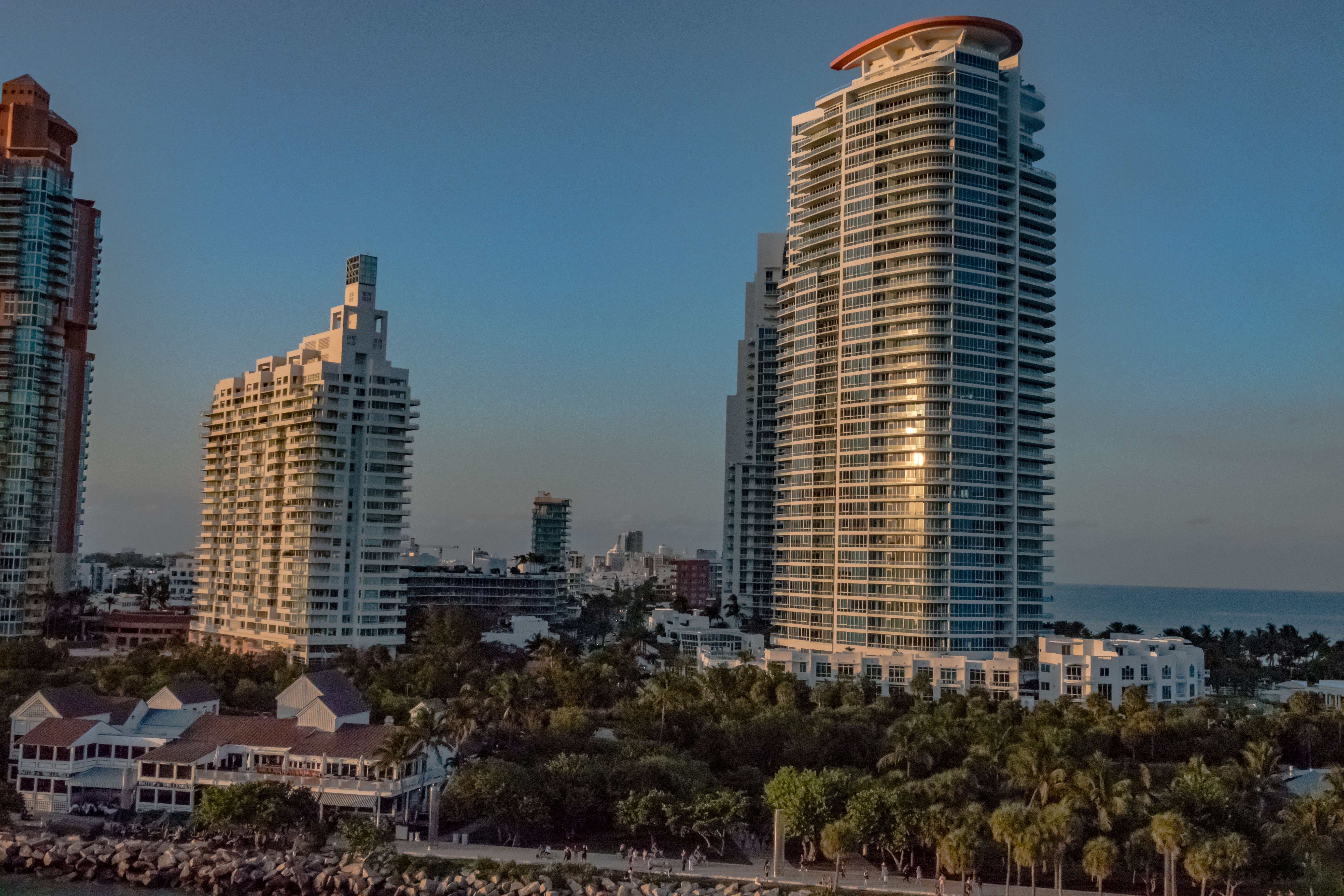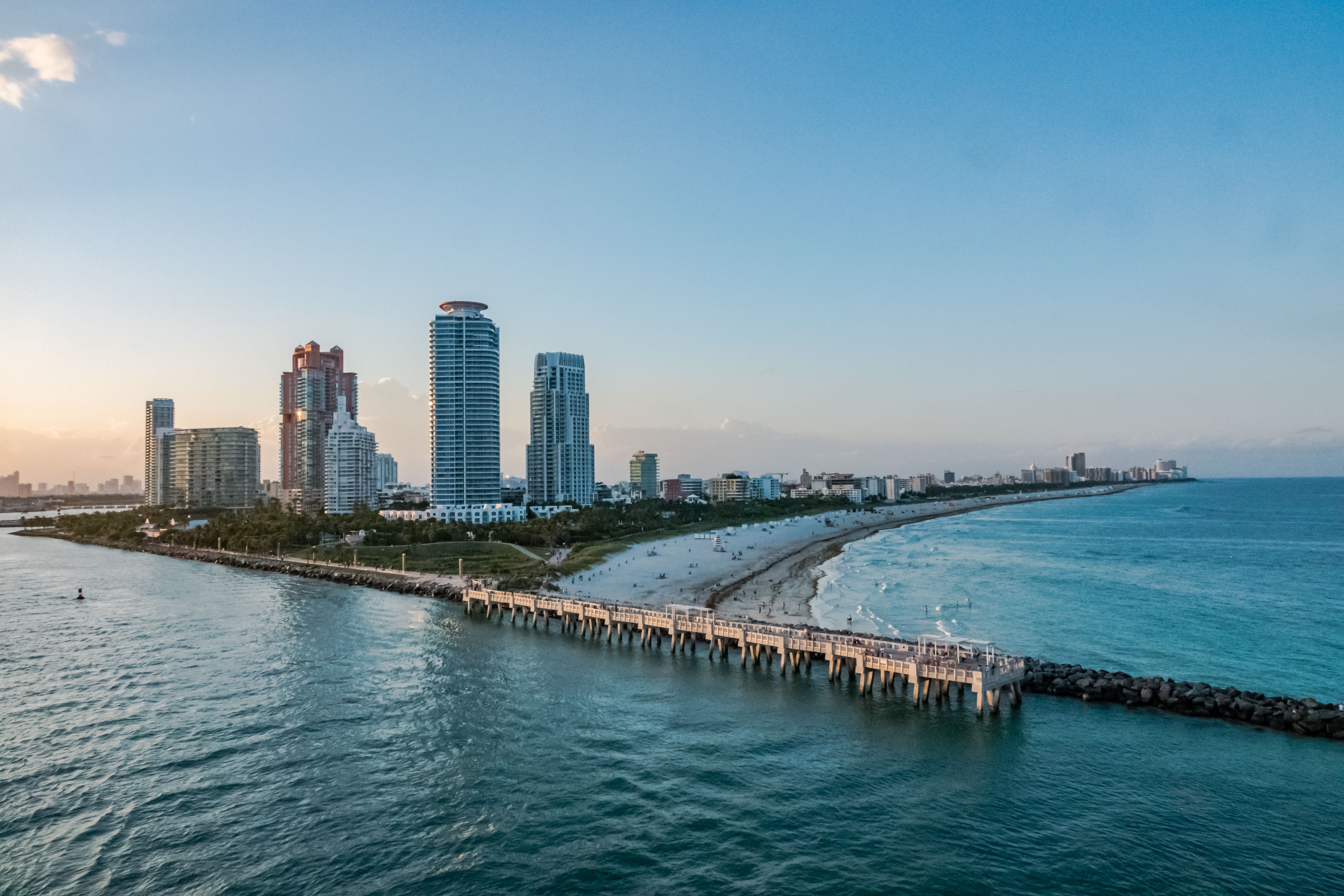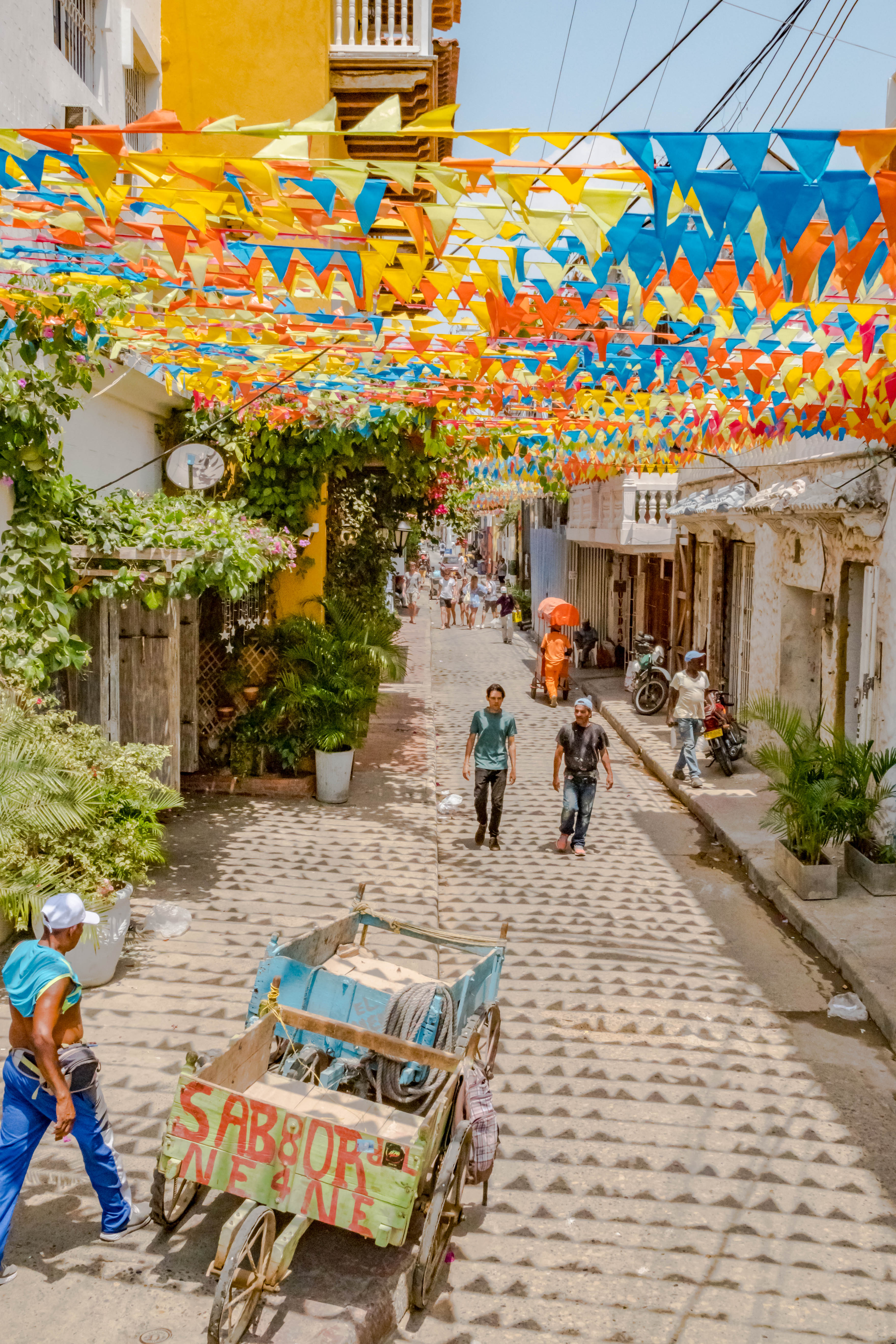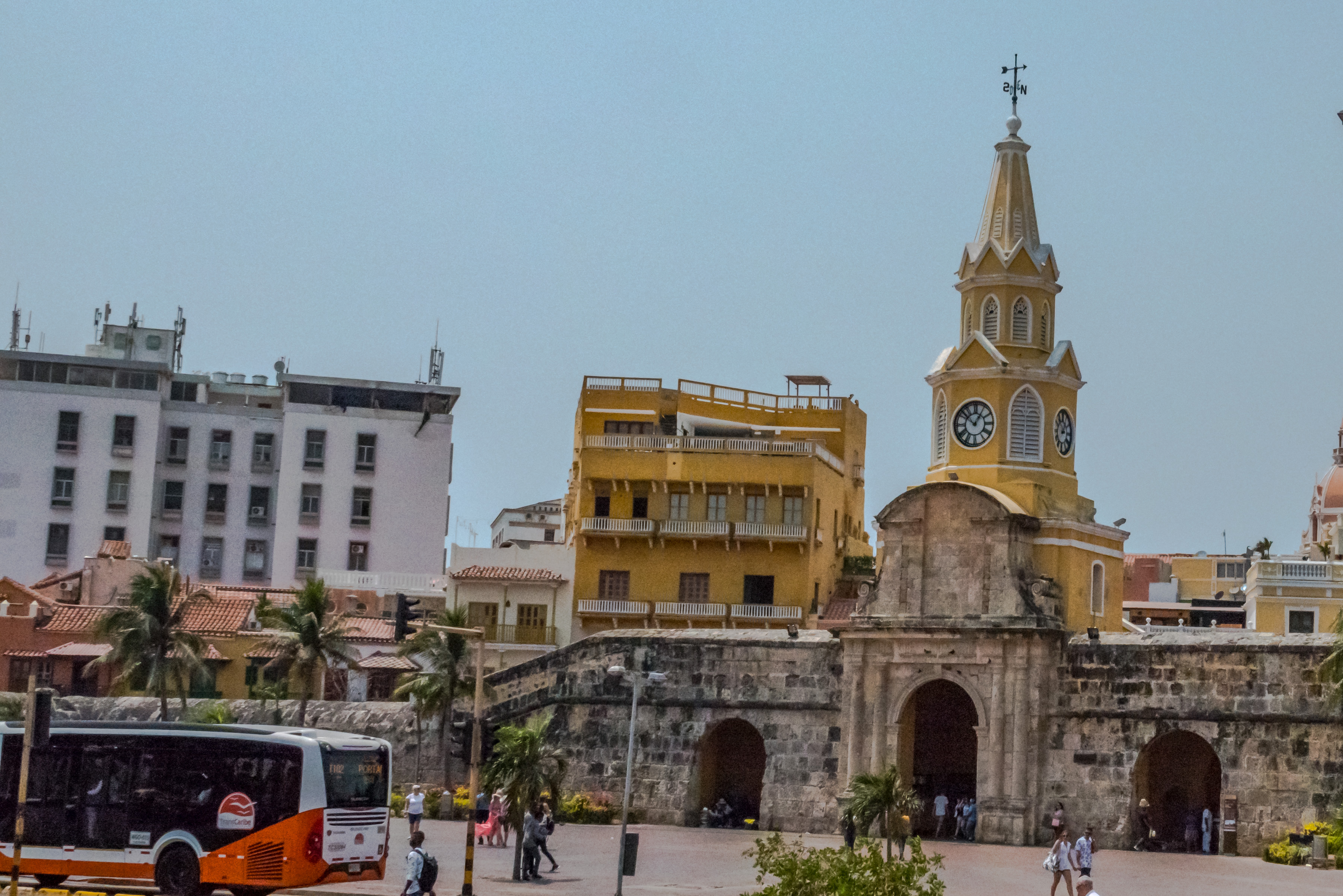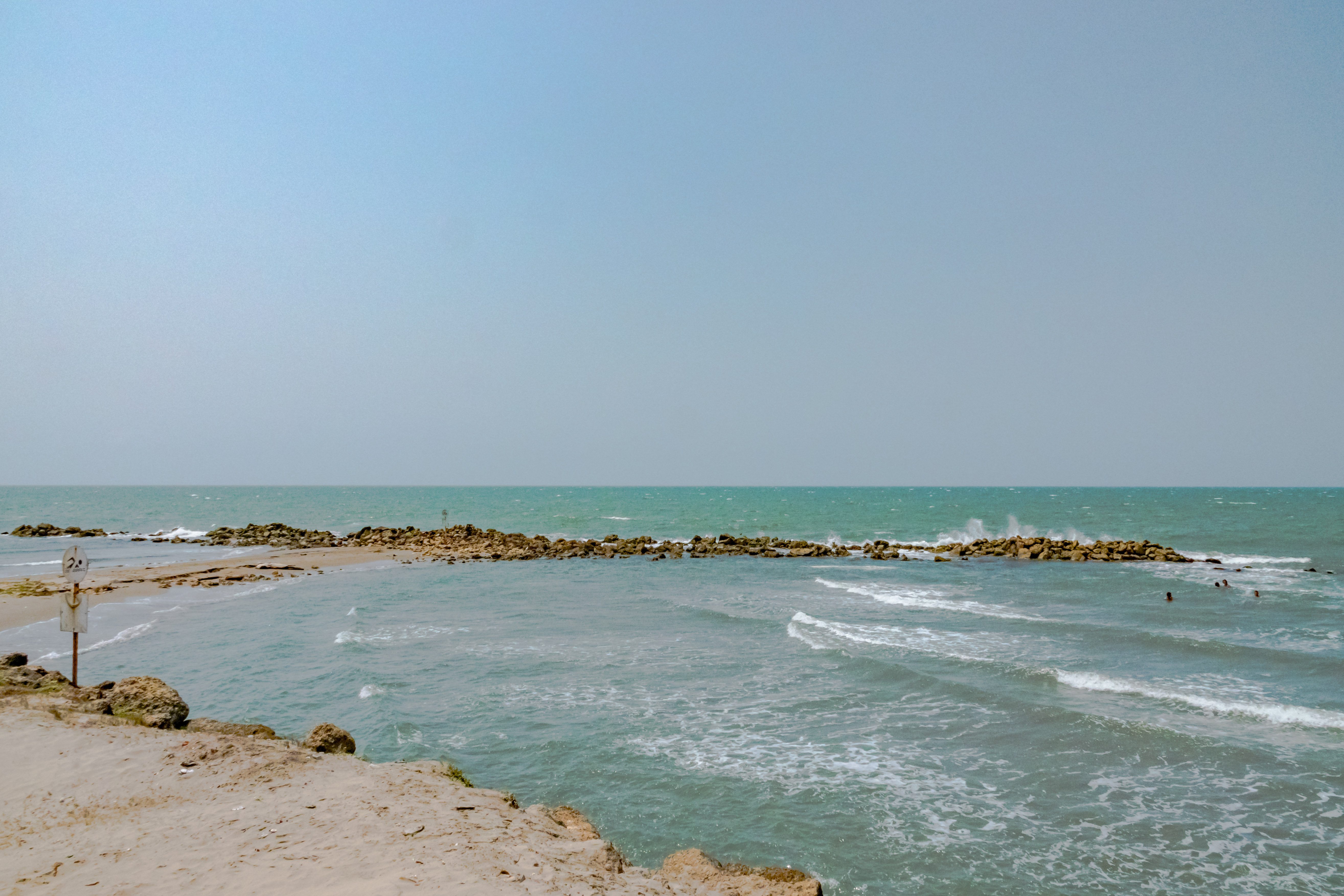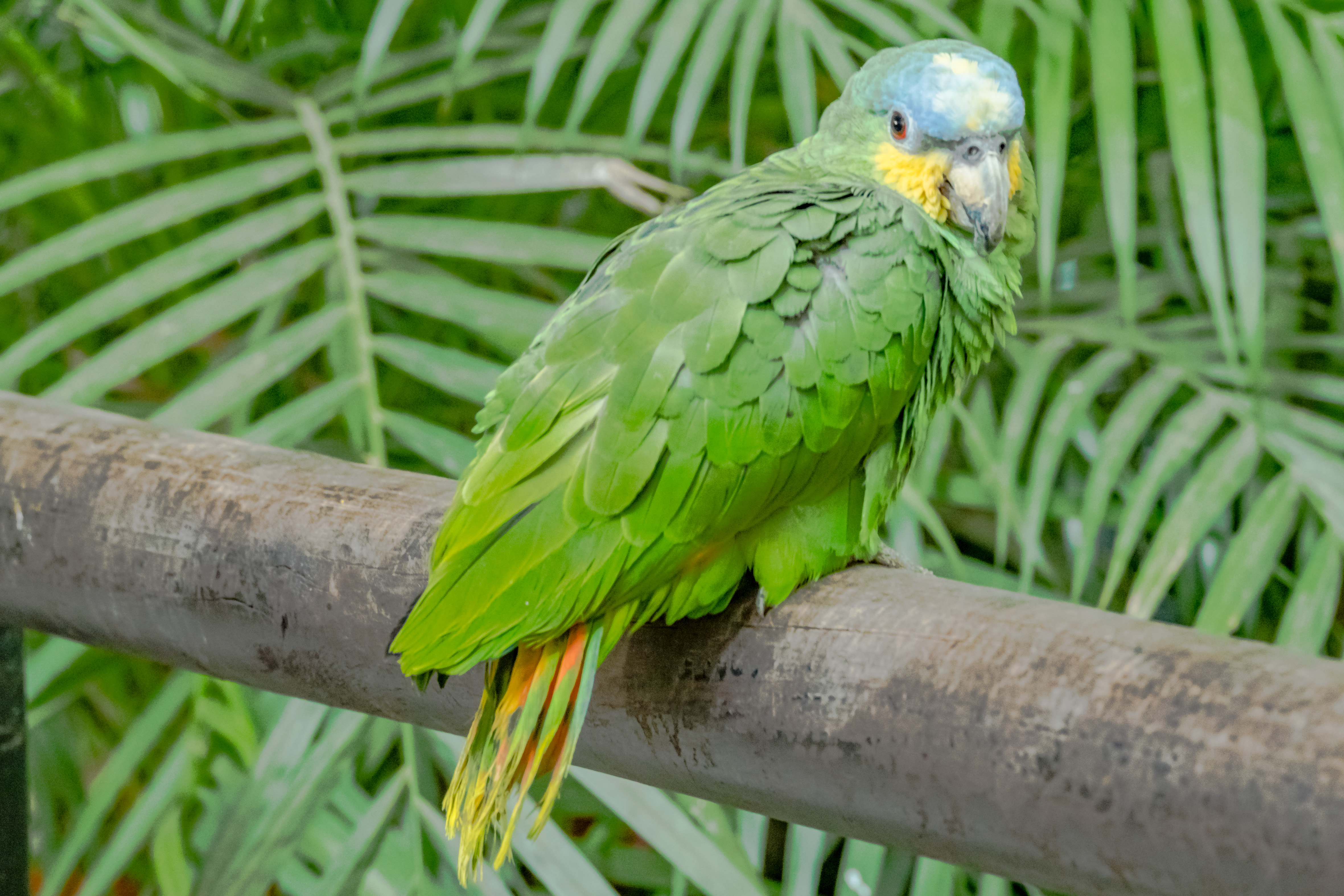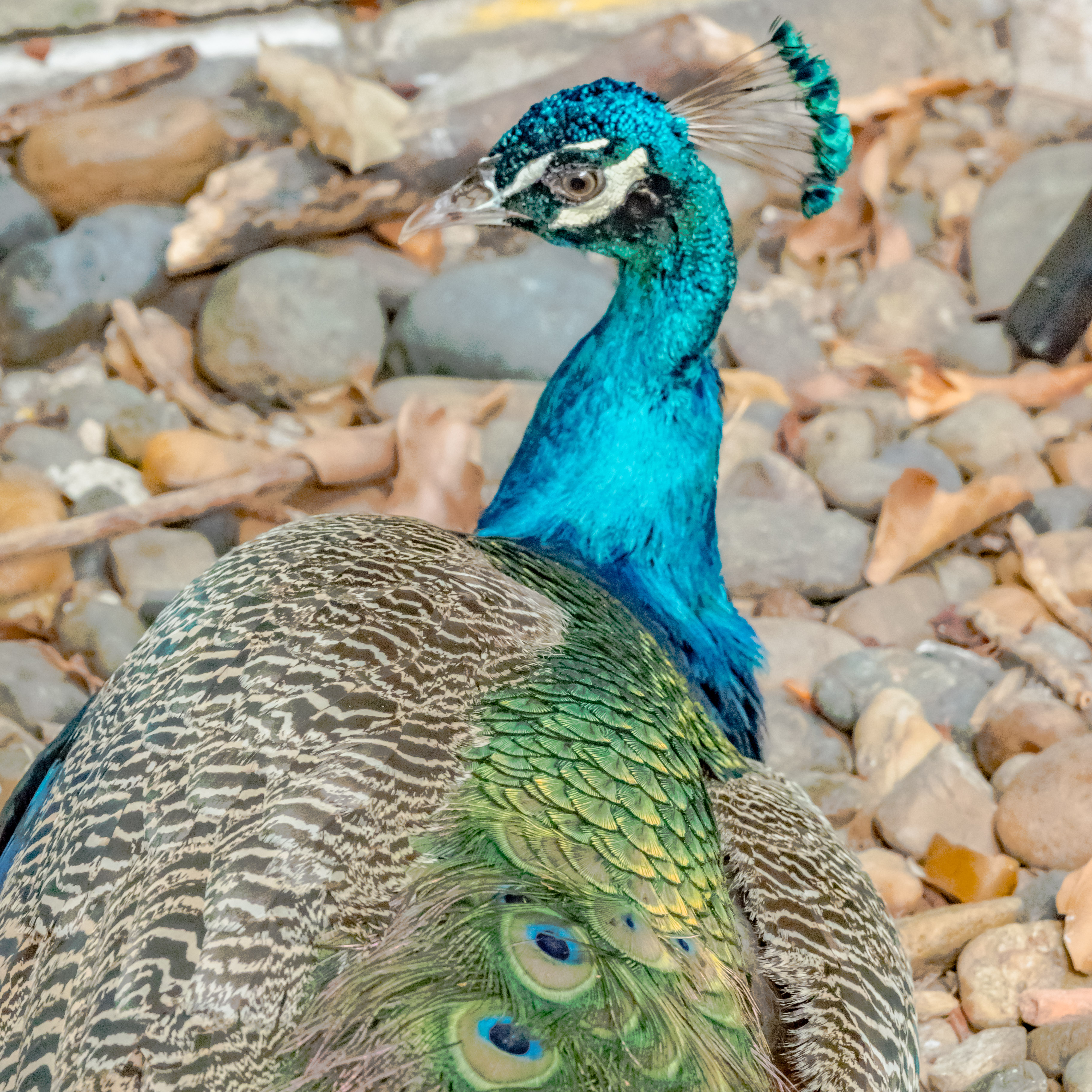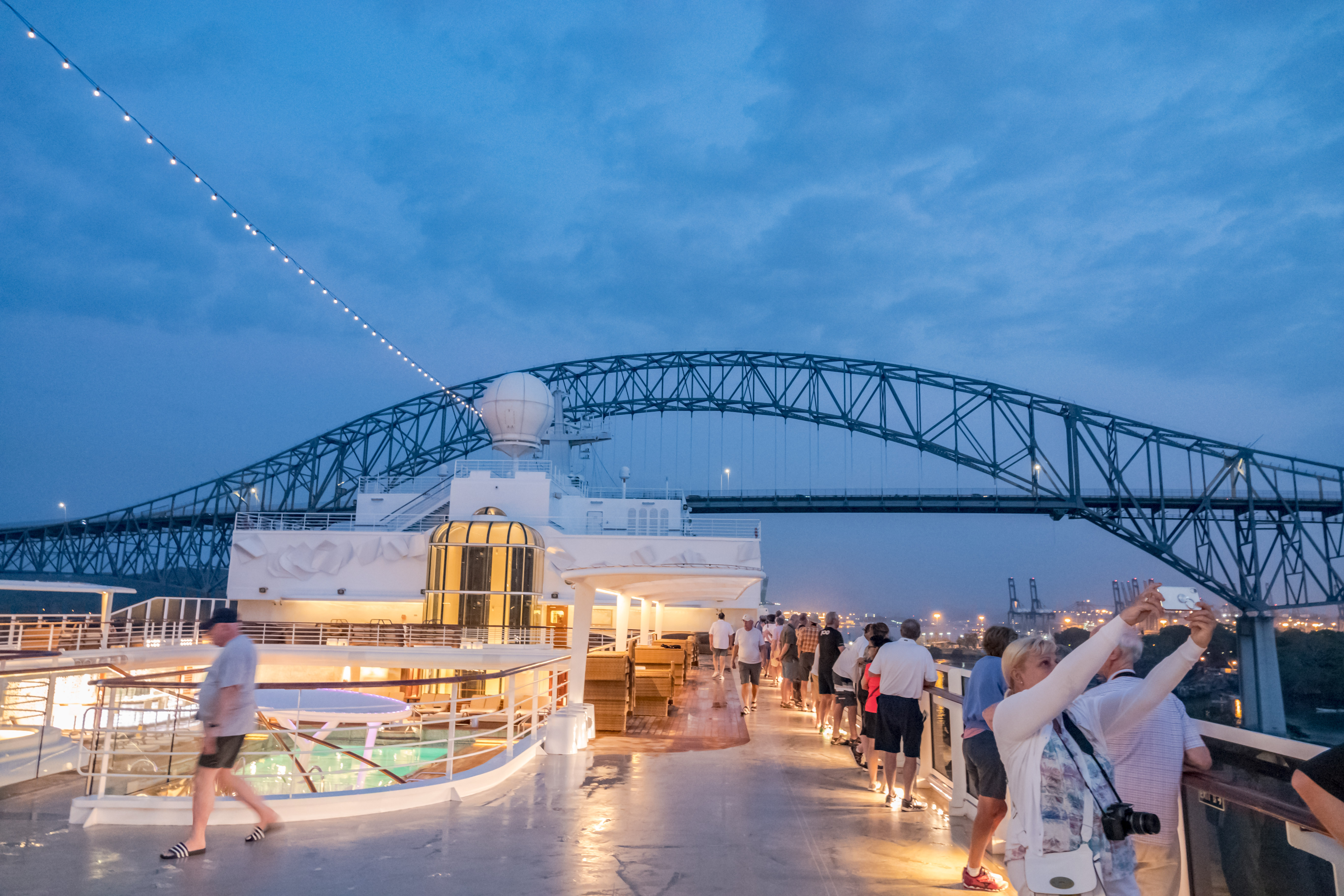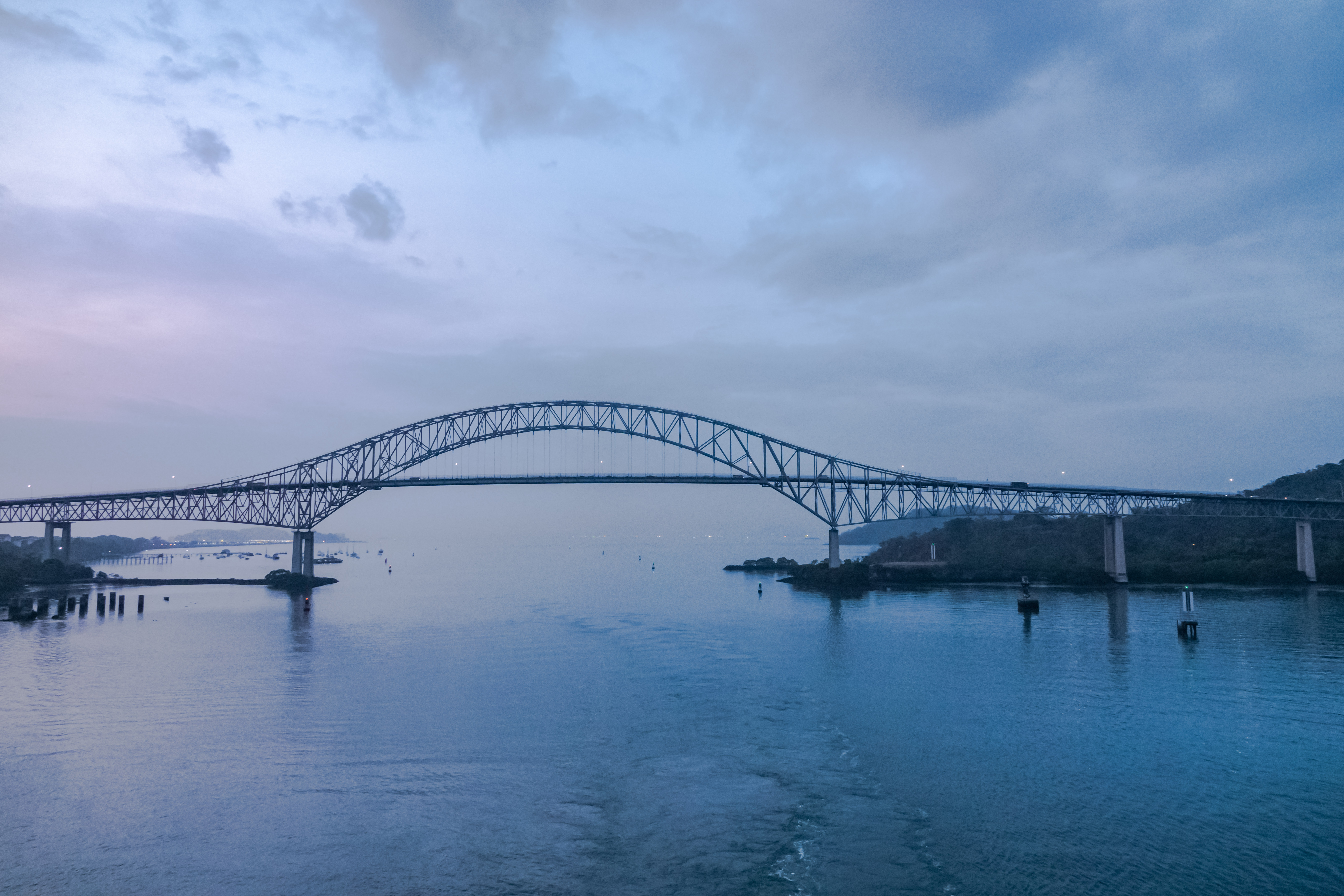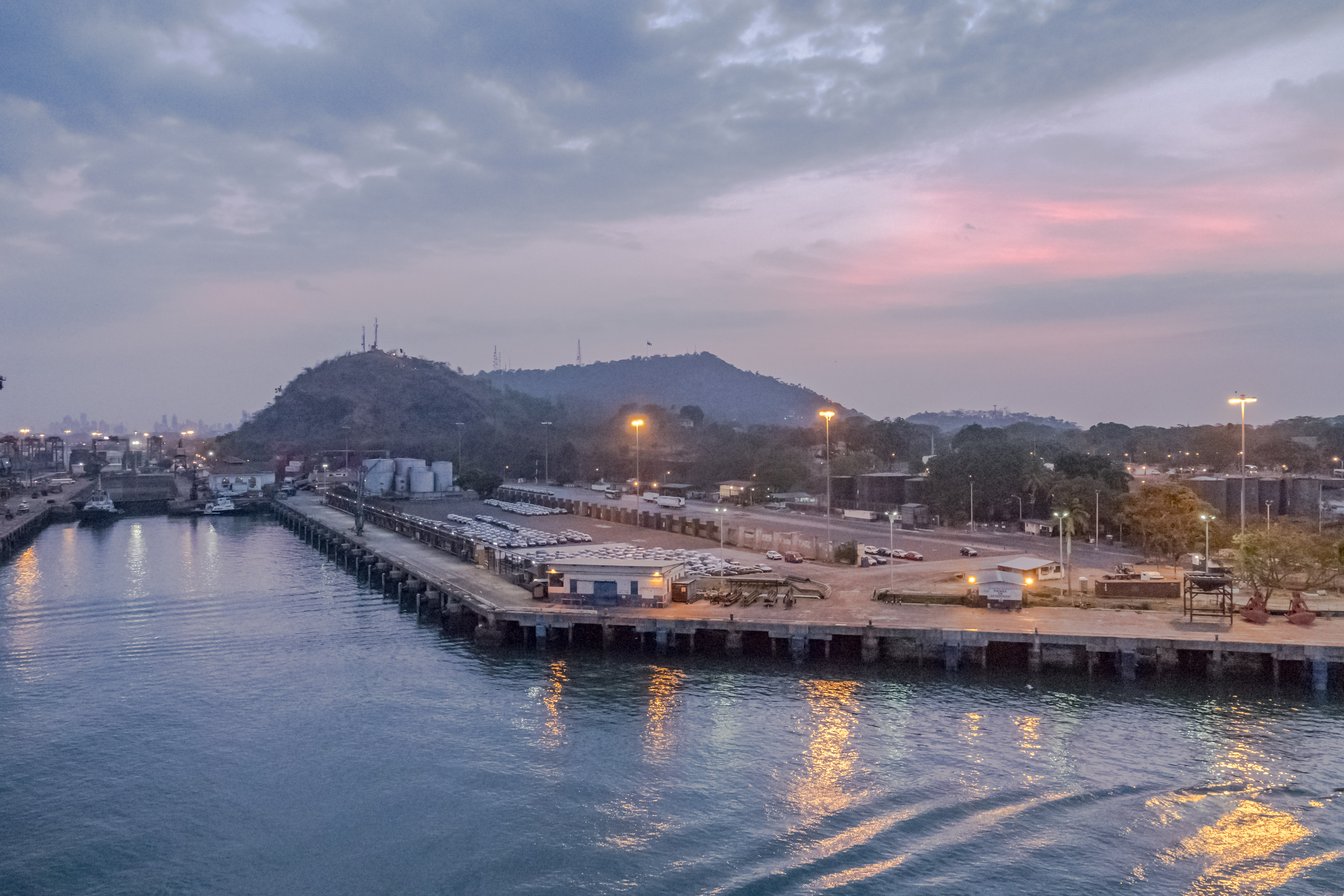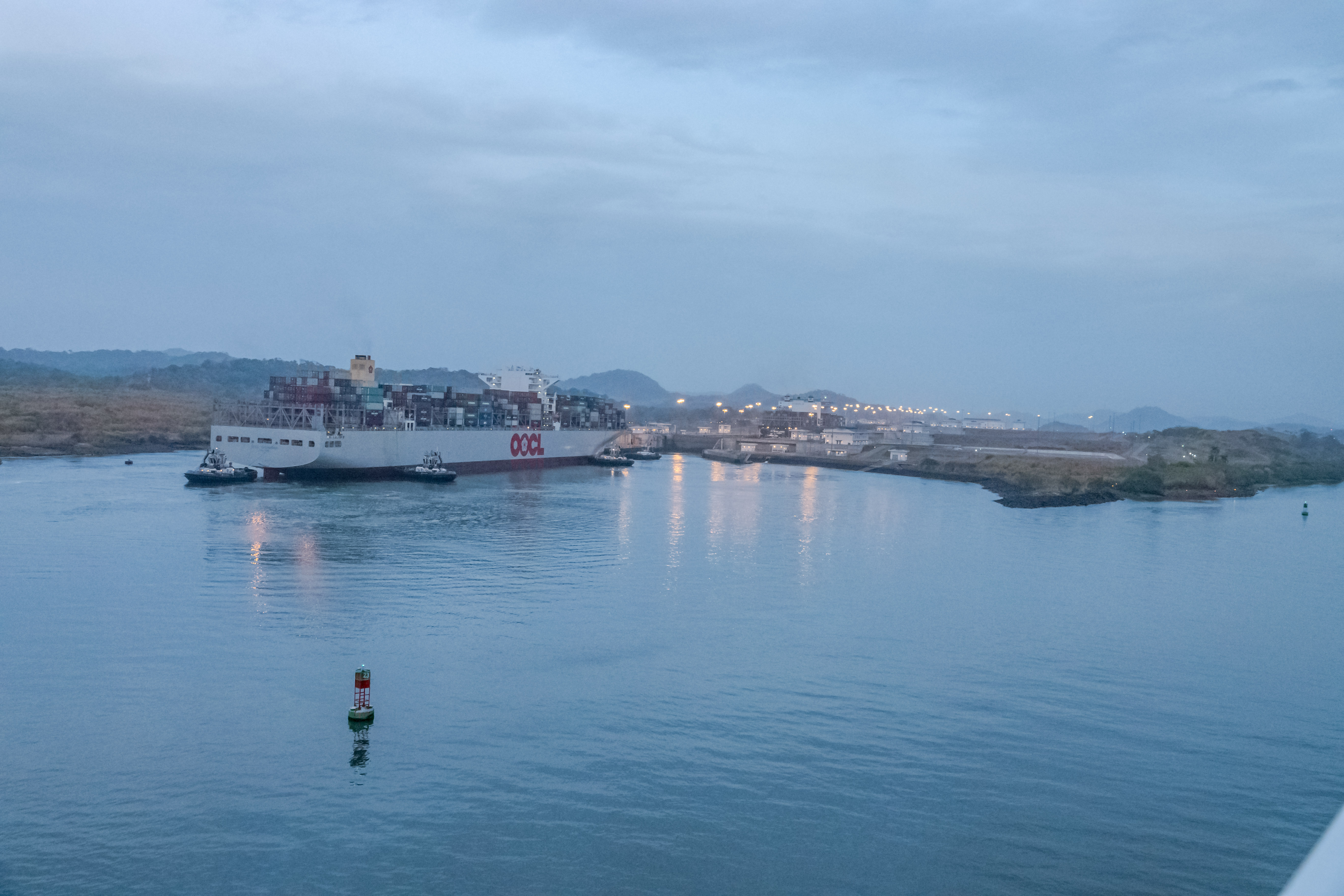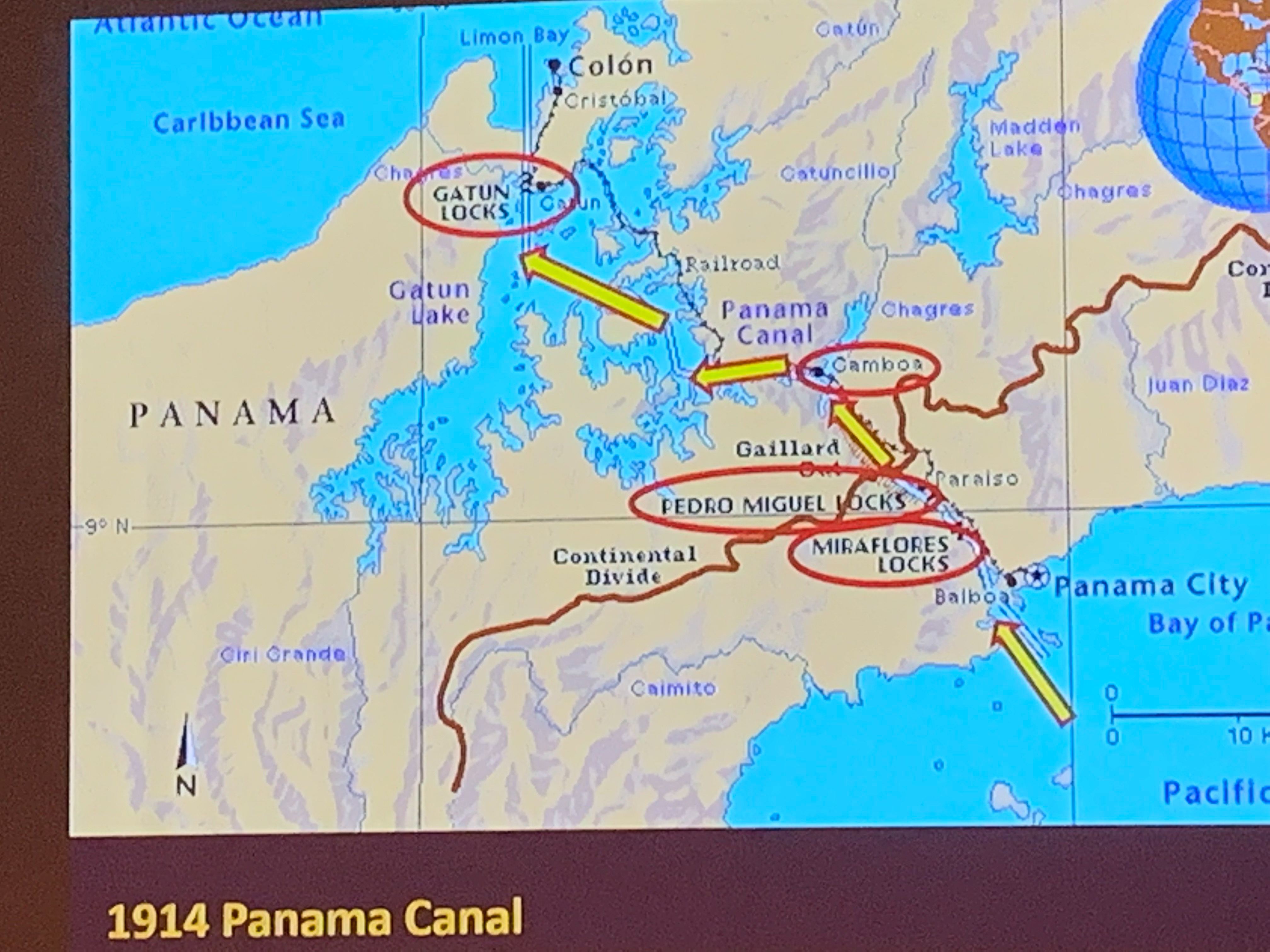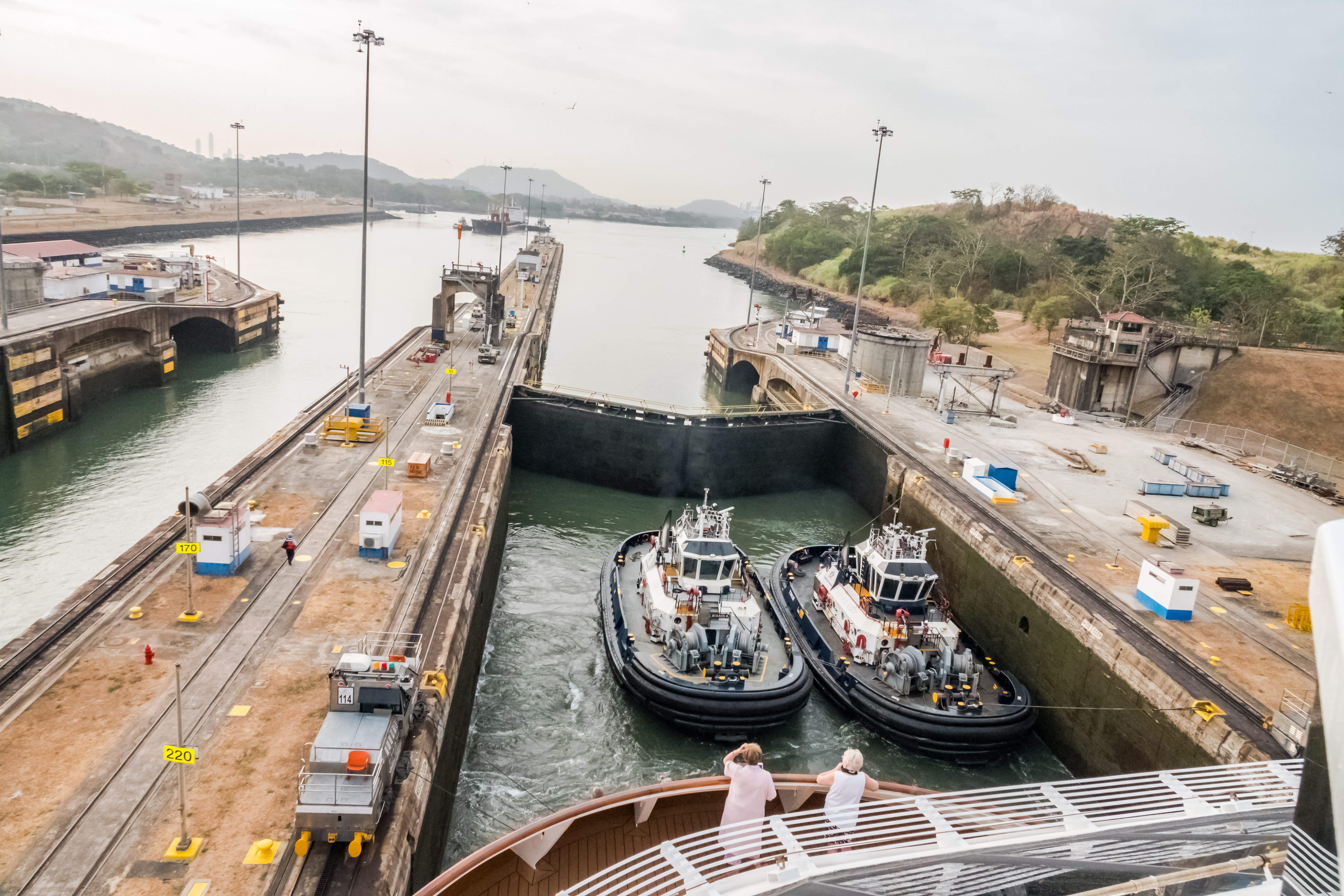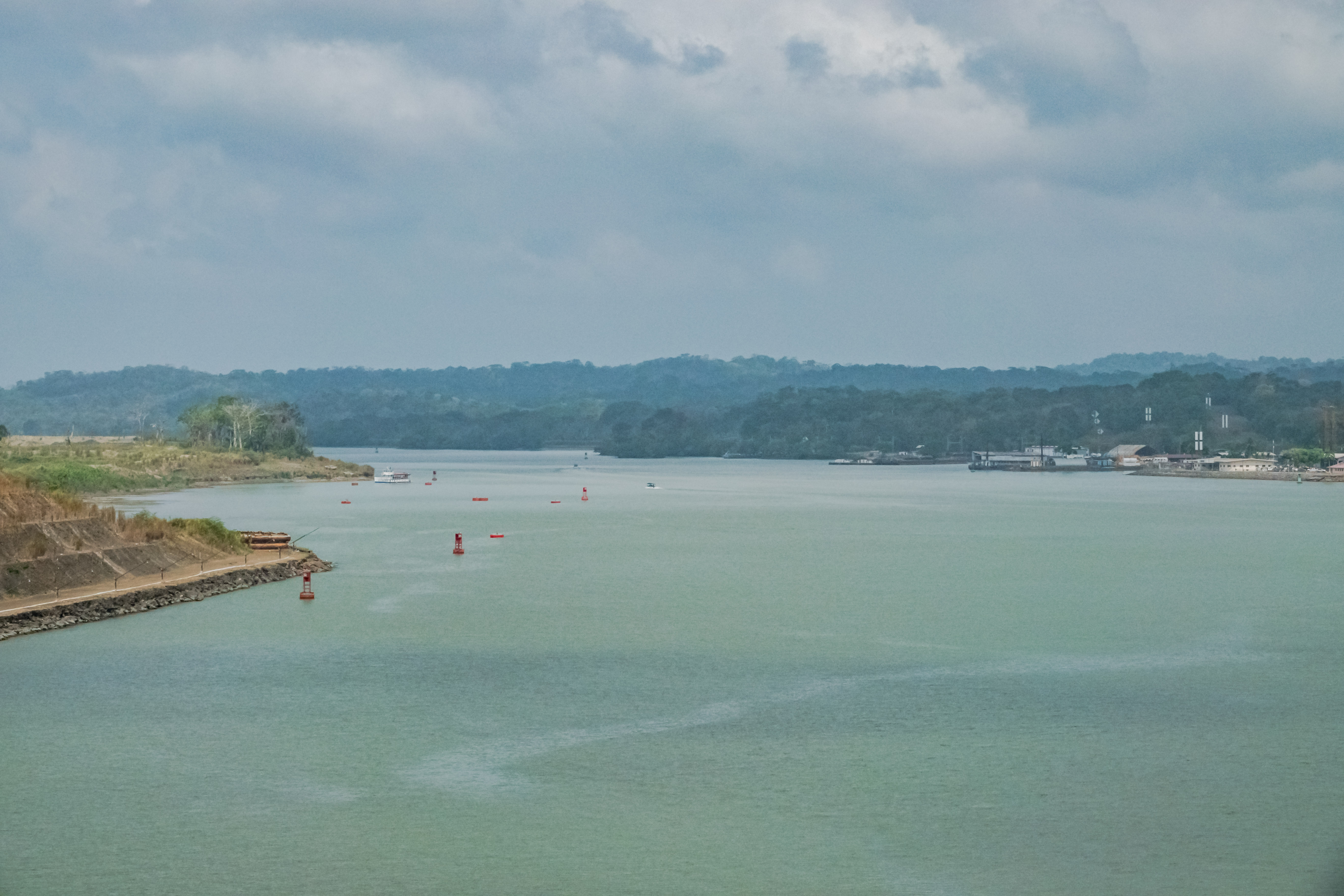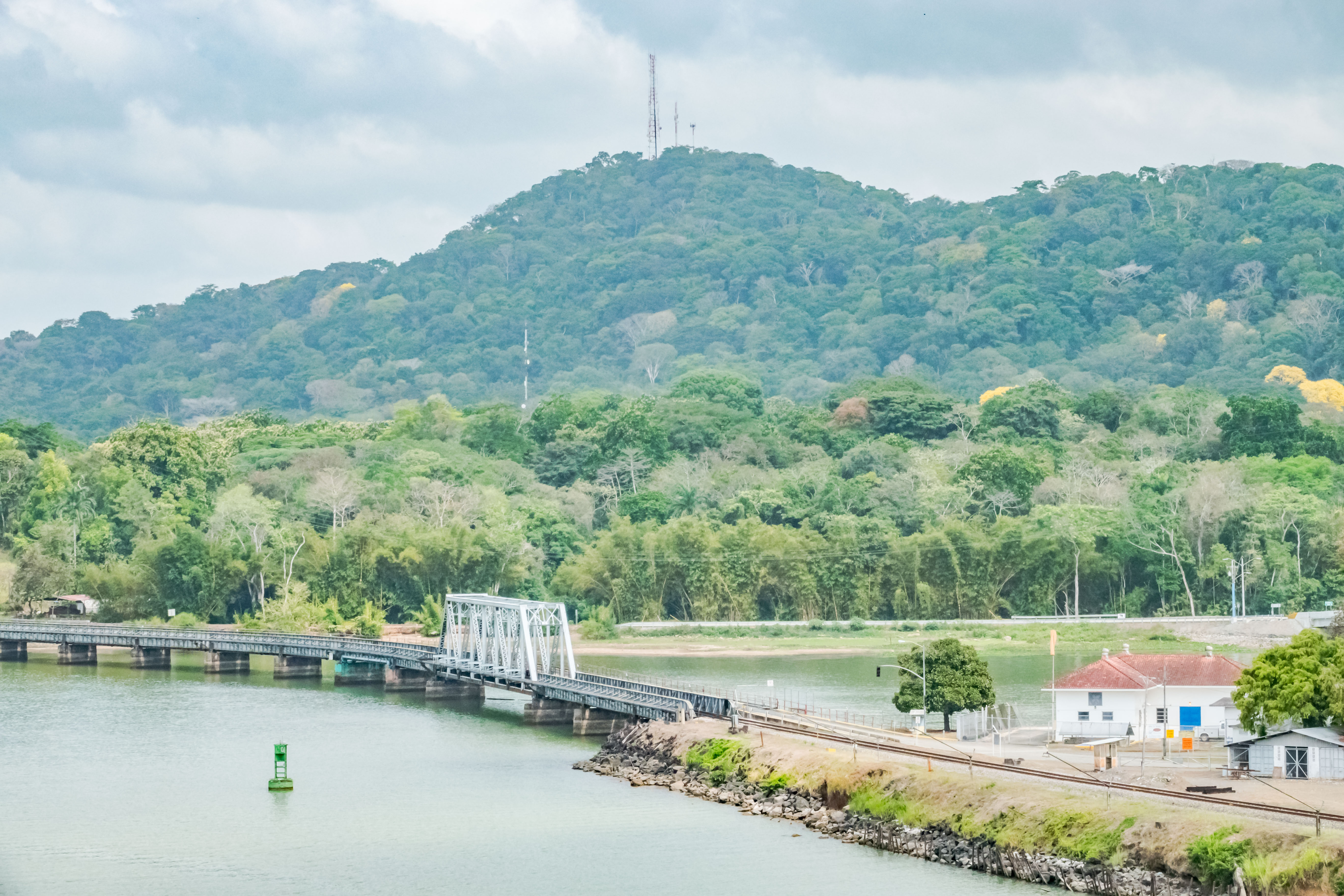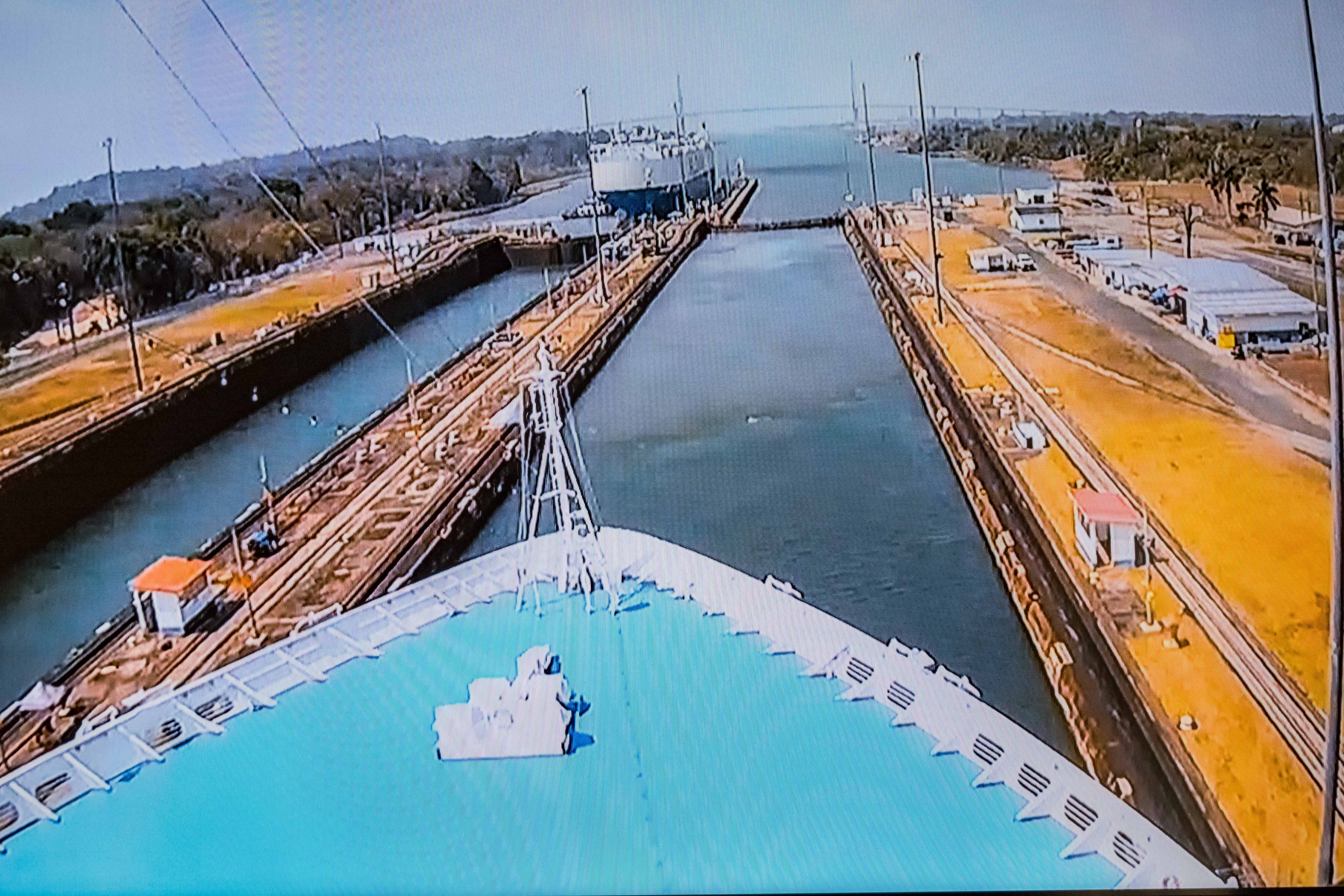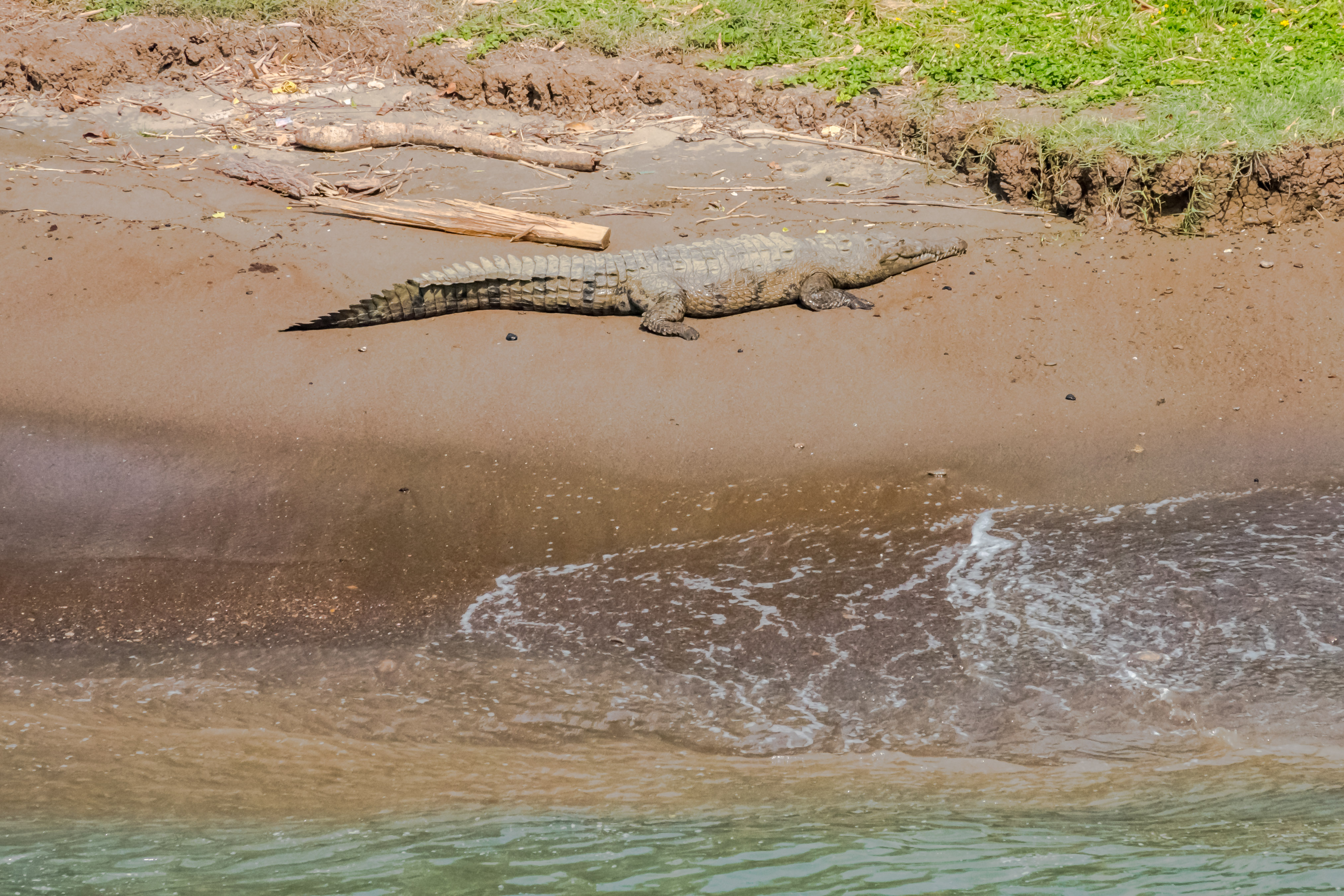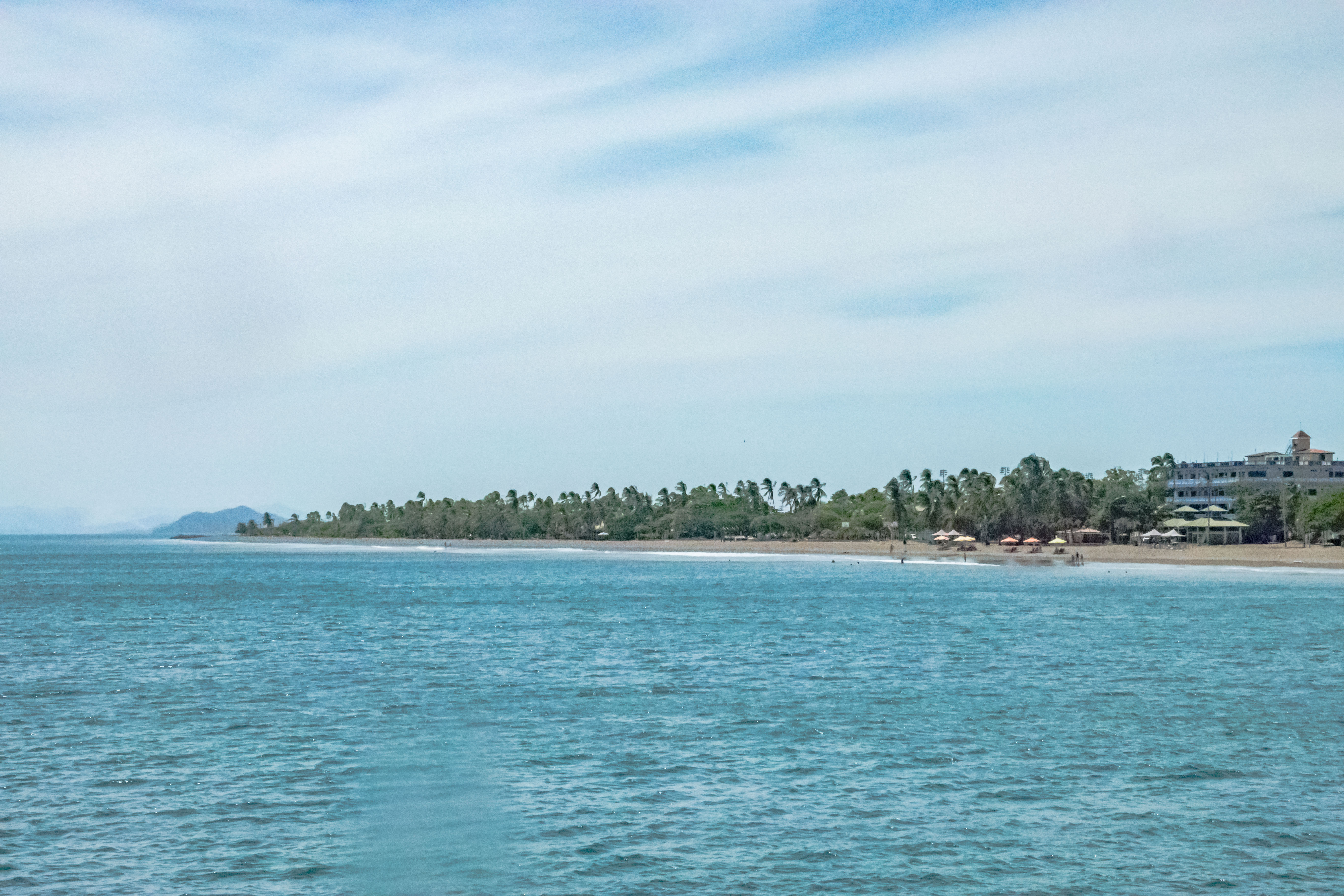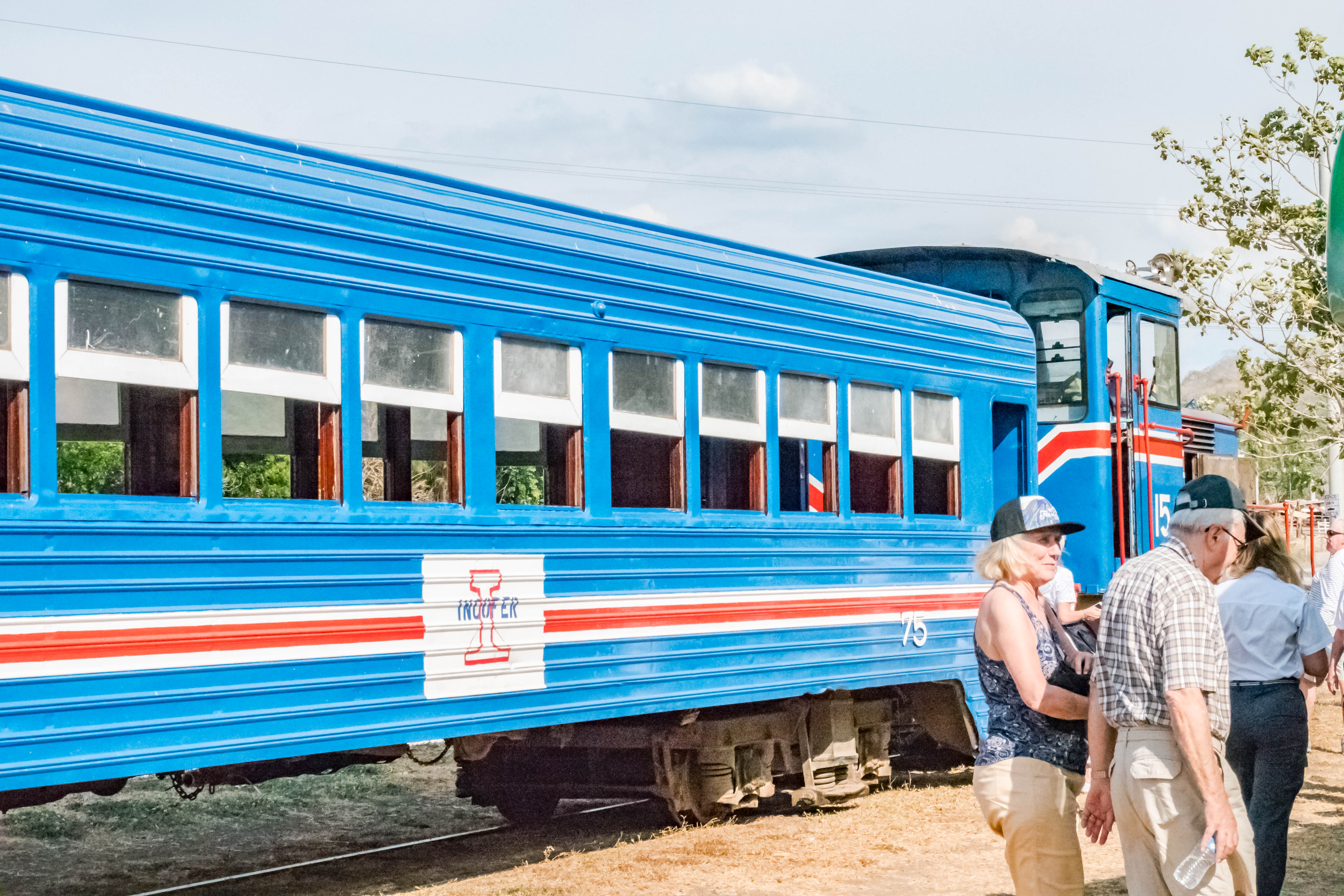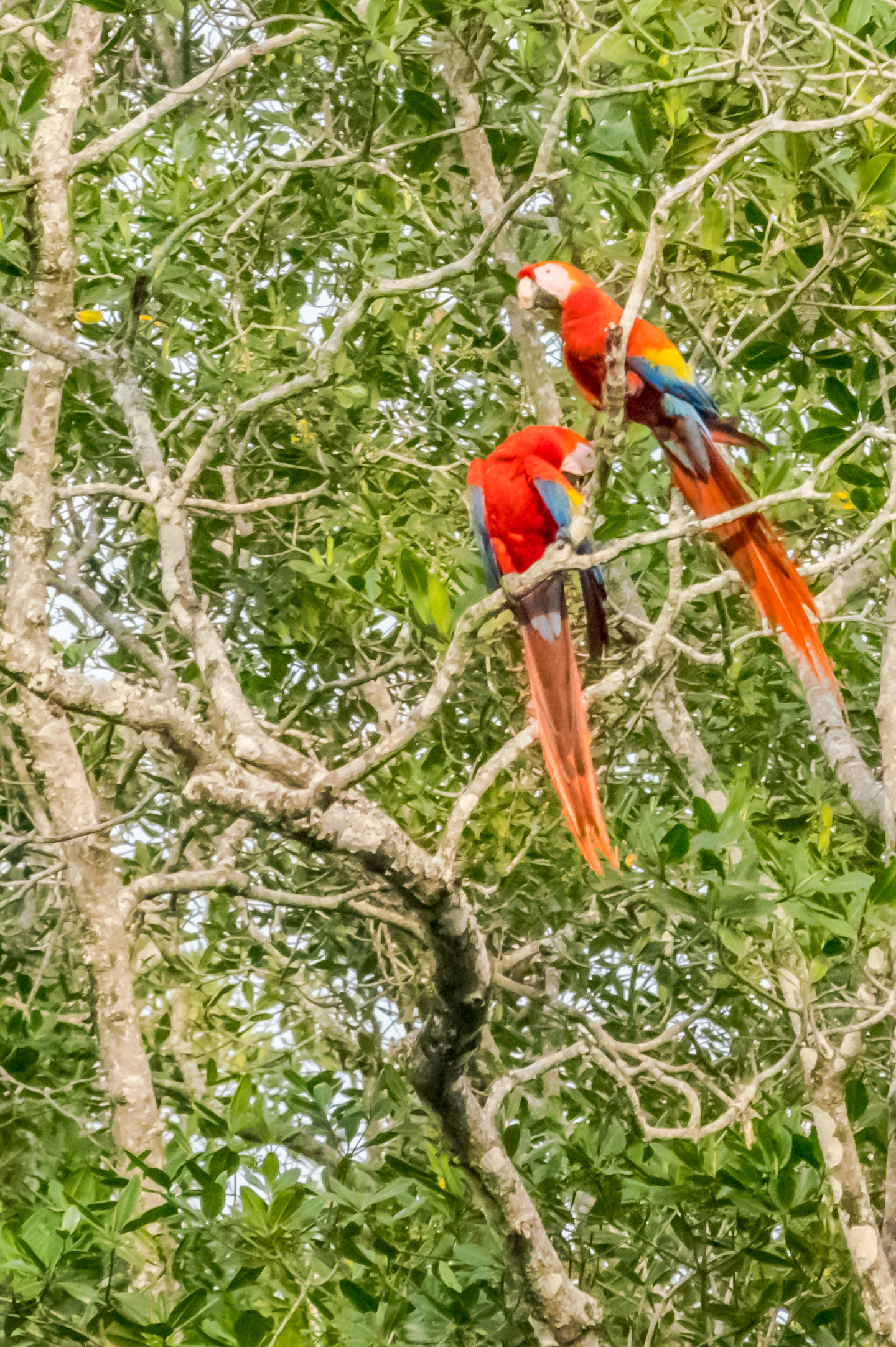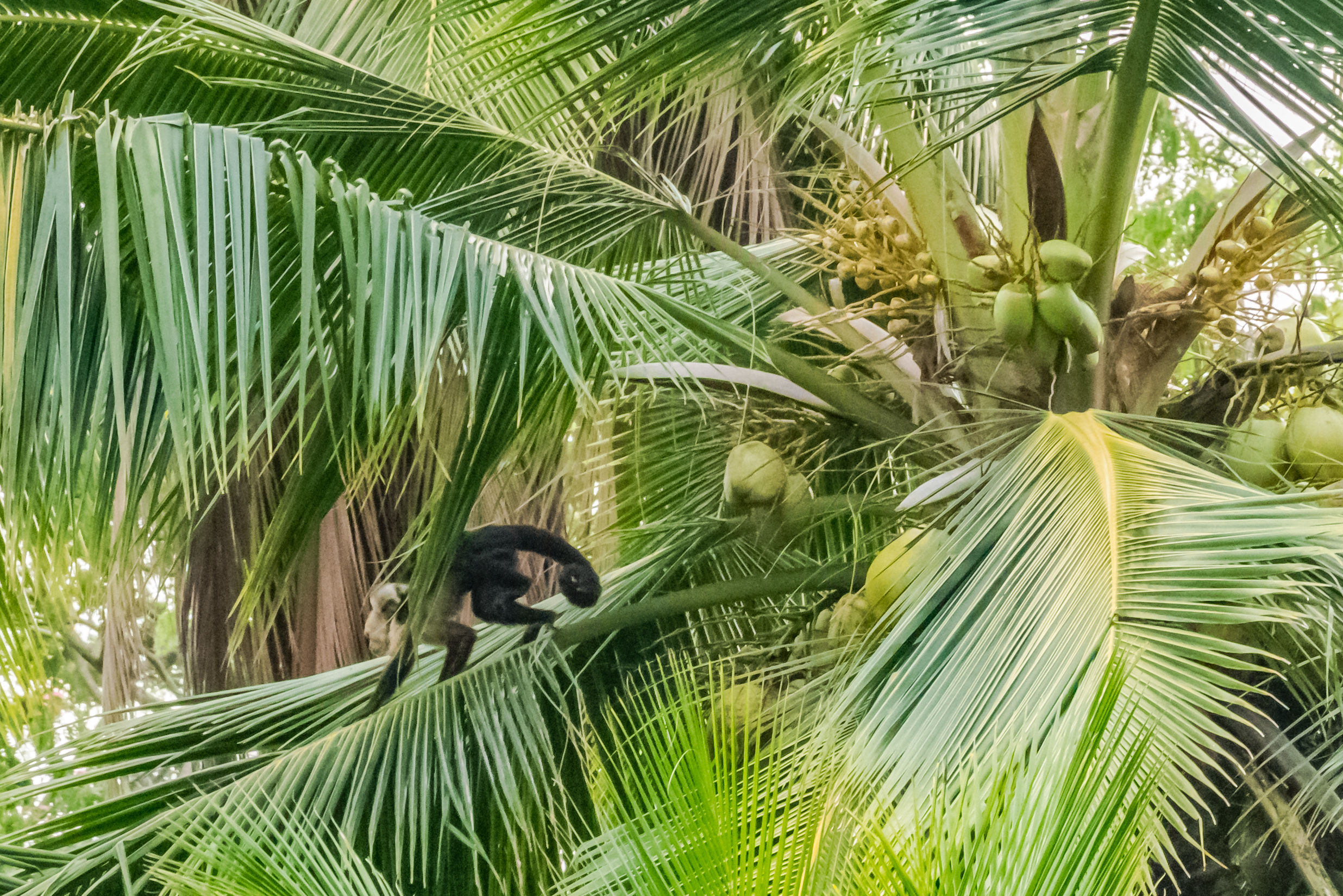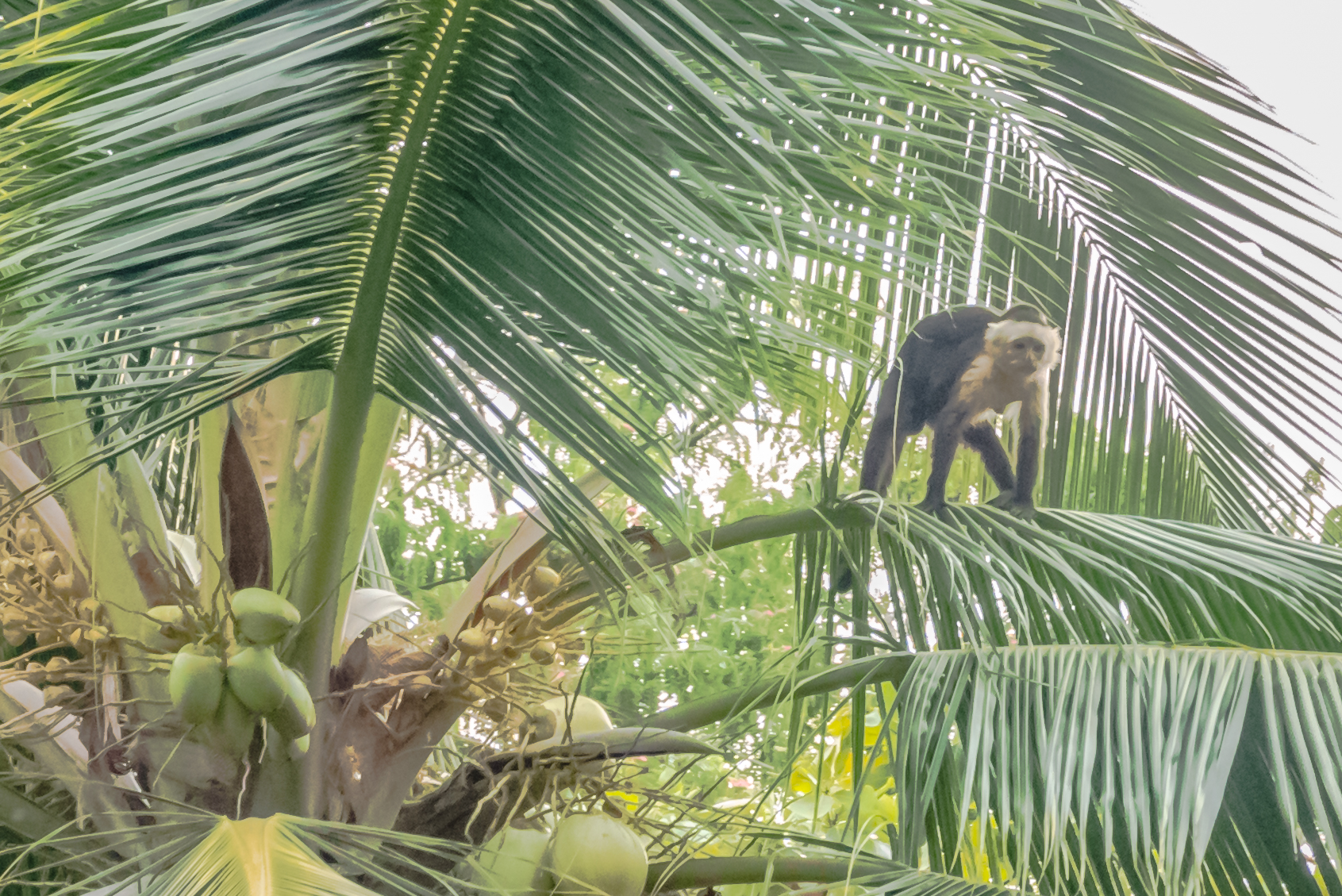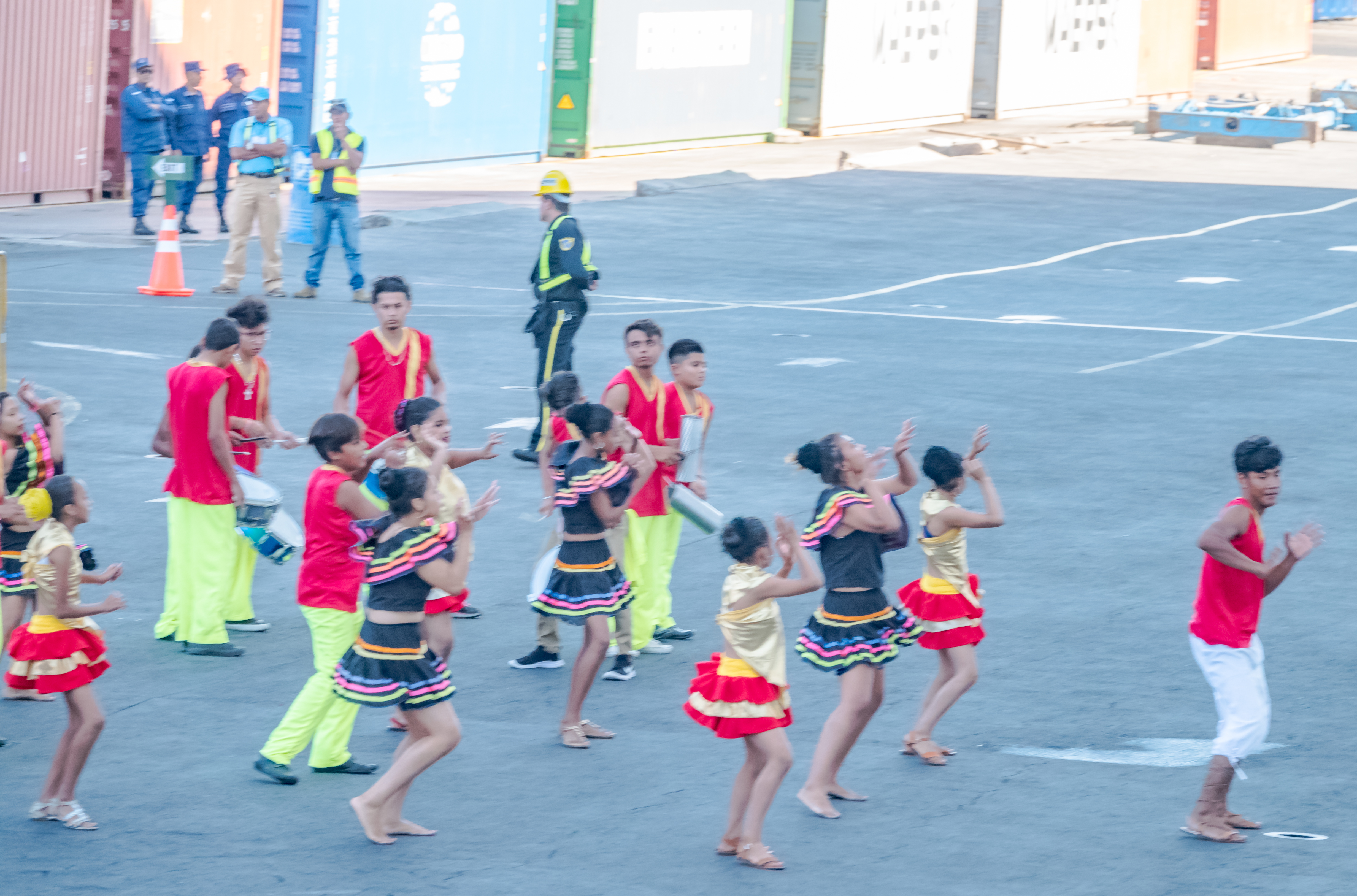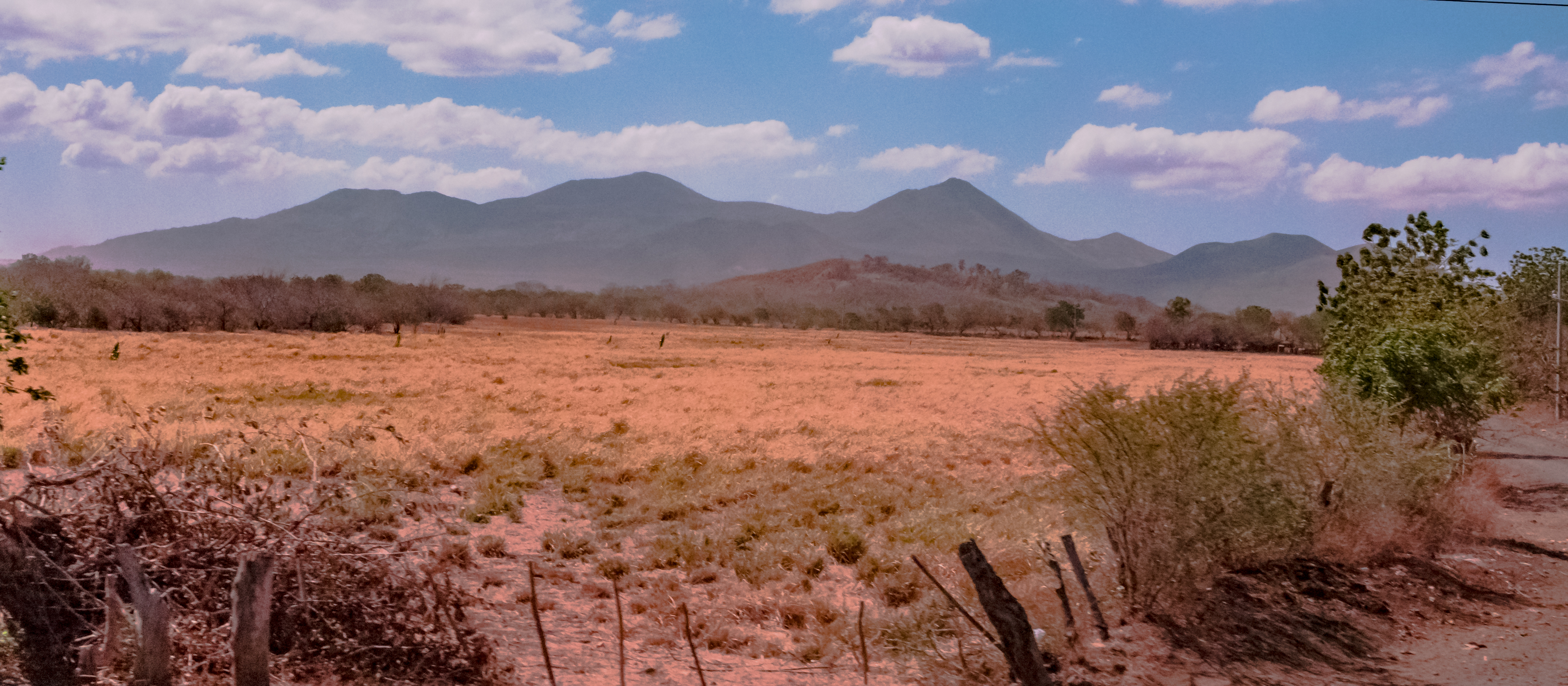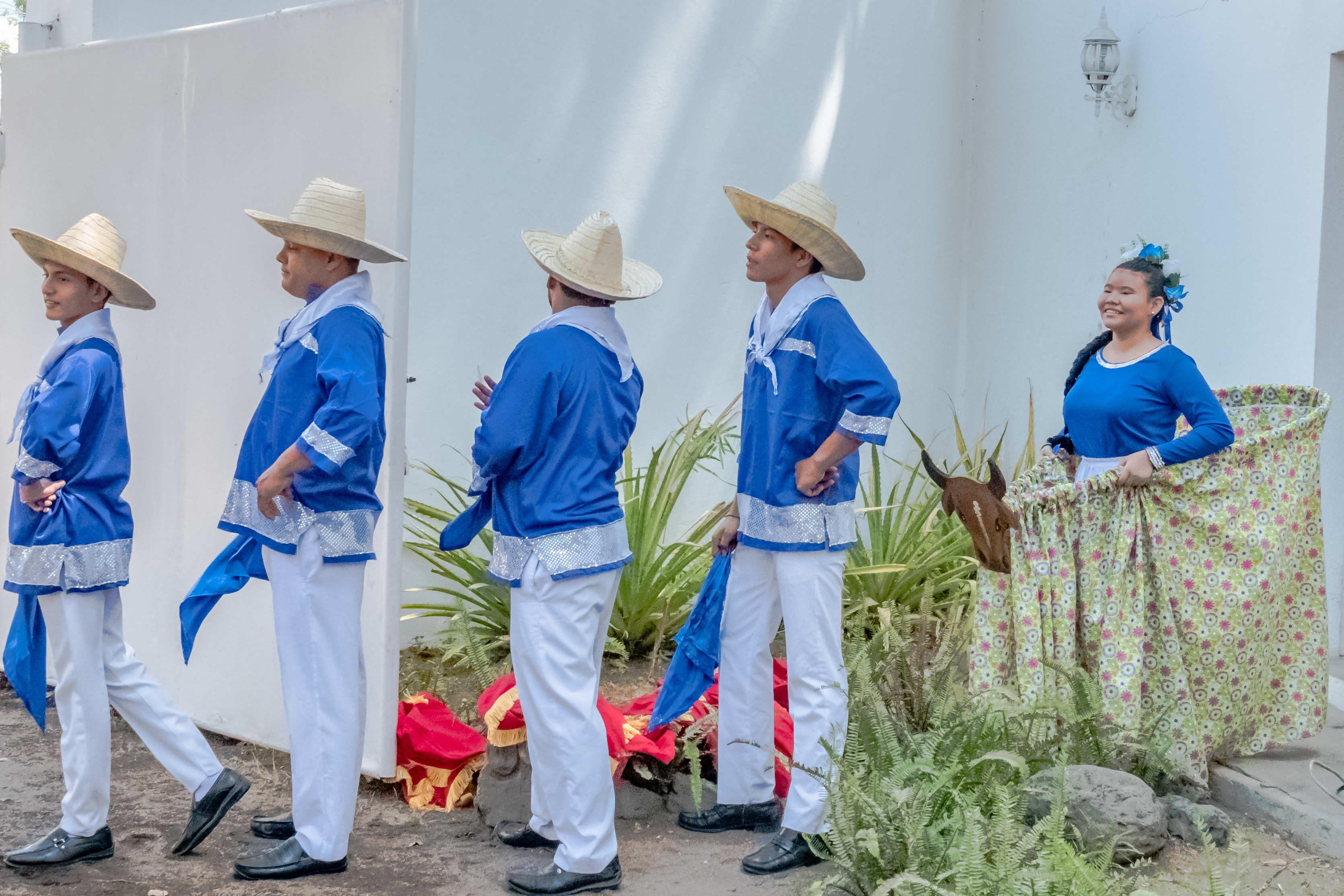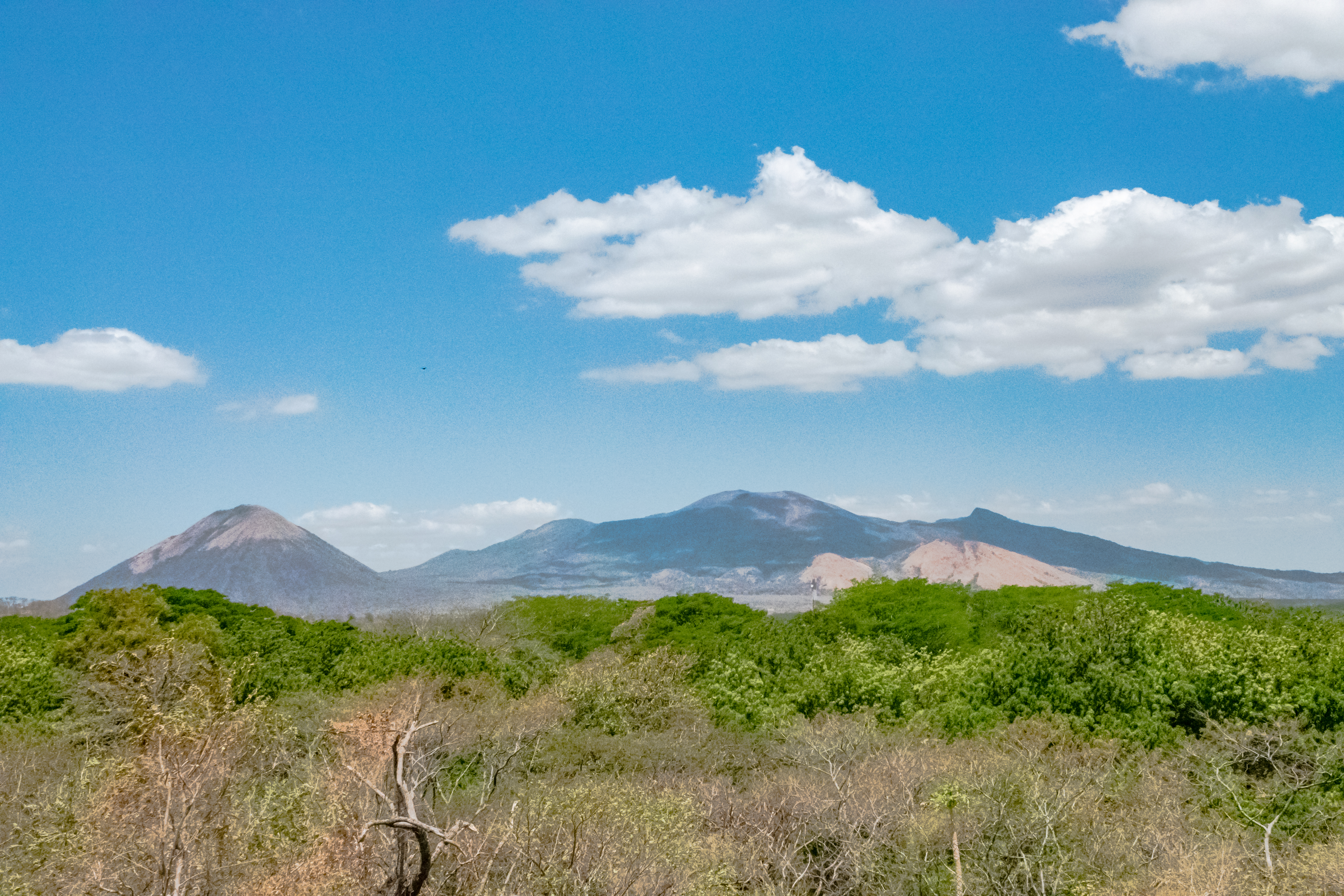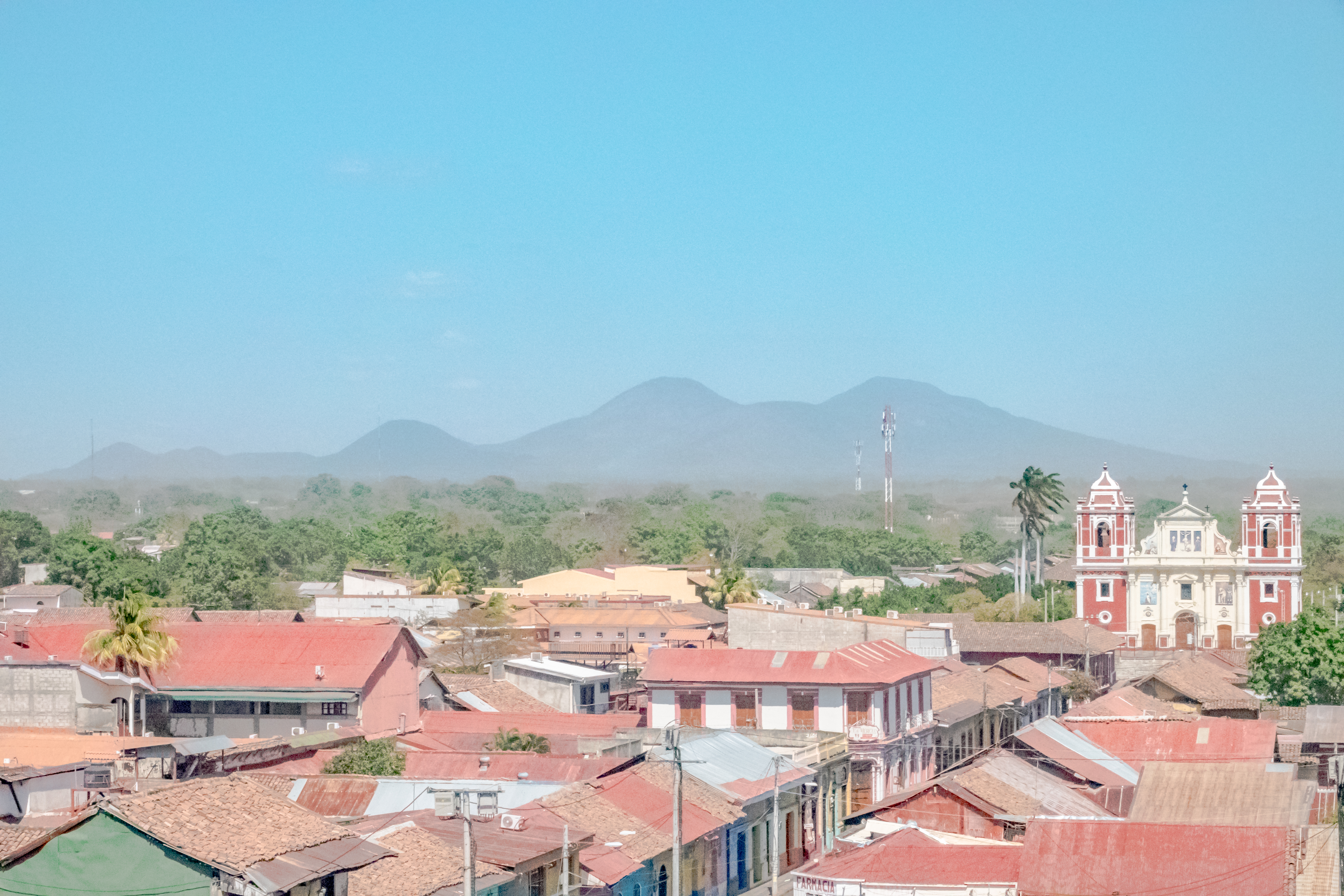March 28-29, 2019:

March 28th:
After two pretty rough days at sea, we’re now docked in the Royal Naval Dockyards in Bermuda. We’ll be docked here for about 36 hours, before we set off across the Atlantic Ocean to the Azores. The island of Bermuda is 665 nautical miles to Cape Hatteras (the closest land to the island), and the next nearest land is Nova Scotia. If you drilled through the Earth to the opposite side, you would come out directly opposite Perth, Australia.

Bermuda sits on an extinct volcano, situated about 100 feet below the surface. A reef grew on it until it pushed out of the sea, when it was destroyed by waves, which limestone and created sand dunes, and solidified over time. Not much grows here naturally, but over the centuries, people have transported countless varieties of flora to the islands, and it is a green and flowering oasis. The only tree which is endemic is a kind of twisted cypress, which is not much good for building anything.


Bermuda is a self-governing British Overseas Territory, and is the largest left in the former British Empire. Although the Governor is appointed by the Queen, the main governing authority in Bermuda is in its Parliamentary system, which has two houses. Parliament meets in Session House in the capital of Hamilton, which is about a 45 minute drive from here.
The Bermudian currency is the Bermudian dollar, which is pegged exactly to the US dollar. In fact, most merchants readily accept US currency, and will actually give change in US currency as well. Which is a pity, as the Bermudian currency is some of the prettiest we’ve ever seen!
Bermuda consists of 181 islands and islets, which are really the tops of low forming volcanoes near the Sargasso Sea upon which coral has grown for millennia. The total land mass is about 20 square miles. The population of Bermuda is pegged at 71,000 people, but only about 1,000 of those are permanent residents.




The islands enjoy a subtropical climate, which encourages a riotous profusion of flowers and flowering bushes to bloom here. However, it’s still early in the season to enjoy all that bounty, as it is blowing hard today, and raining off and on.
As you might guess for a country consisting of so many tiny islands, in many cases, the best form of transportation is often by boat. From where we are moored, the most expeditious way to get to Hamilton is a ferry, which only takes about half an hour. The bus system offers day pass, and you can use the No. 7 or 8 bus to Hamilton, but it takes about an hour to get there. There is also a shuttle bus, which runs to Horseshoe Bay, and is one of the most iconic tourist sites with its pink sand beach. The islanders actively discourage car ownership and use, and the roads are narrow and basic. There is a 75% import tax for cars with a value under $12,000; for car worth over $12,000, the import tax is 150% of the value. There are no cars for rent, but recently, the island has switched from renting mopeds to renting small, 2-seater enclosed boxes. Basically, they’re quad-style scooters with a cover. Jim and I didn’t try one, but we were tempted.

For our first activity of the day, Jim and I have signed up for a walking tour of the Royal Naval Dockyards with a local historian. He was incredibly informative, but at times, it was like drinking from a firehose! I hope I’ve captured enough of what he said to give some relvance to these pictures!
Bermuda was discovered by Juan de Bermúdez in 1608. At that time, there were no inhabitants of the island. English colonial activity began in 1612 in St. George’s parish, which is near to the Dockyard. The settlement in St. George’s is the oldest continuously inhabited English colony in the New World.
The Royal Naval Dockyard is built on Ireland Island. It was originally settled by John Ireland, who wanted to farm sugar cane and tobacco, but they don’t grow here. Instead, he grew food and harvested birds, fish and turtles for Jamestown colony in the Americas. He went inland, and started farming in what is now known as Somerset Parish. However, by 1650, the land was depleted from intensive farming efforts, and many of the meat and fish sources had been depleted as well, so further development of the island was abandoned.
After American independence in 1783, the British navy decided they needed to put a resupply base here since the former colonies were no longer available. The first buildings were made of wood imported from Canada, and built by slave labor. Given the gale-force winds prevalent in the islands, those buildings didn’t last long, and the British began to build out of coral blocks (limestone), which is so prevalent on the islands. In fact, in the area where the fort and the storage houses were built, there was originally a mound of limestone, which was cut down to make the blocks for the buildings. All of stone buildings from 1820s are still standing here in the Dockyard. After Britain outlawed slavery in 1834, the Navy used convict labor to build the remaining installations in the Dockyard. Most of those convicts were poor Irish people whose greatest crime was to complain about the British allowing the Irish to starve during the Potato Famine, and who were convicted of treason.
Our two planned activities for the day include a walking tour of the Royal Naval Dockyards, and then a van tour to Hamilton and around the southern tip of the island where some of the most famous beaches are located.
The first thing we can see from our ship is the walled fortress enclosing the Dockyards. In the beginning, when ships pulled in to Bermuda for re-provisioning and repairs, they were required to unload all their gunpowder and store it securely in the Keep. There were separate storage vaults located further in to the Dockyards where ships could procure additional stores of gunpowder to restock their ships.




The Dockyard was never attacked. We walked into the huge area in the center called the Victualling Yard, where all of the preserved food stores were stored. Bermuda imported salt from Turks and Caicos to use for packing meat and fish. In the later years, when the whalers fished off coast in March, those ships also put into Bermuda to process their catch and re-provision.


From the Victualling Yard, you can see the Governor’s Palace, which was the first home in the world built with a cast iron frame. The Royal Navy decided to build it as a test case, at a cost the equivalent of $10,000,000 today.

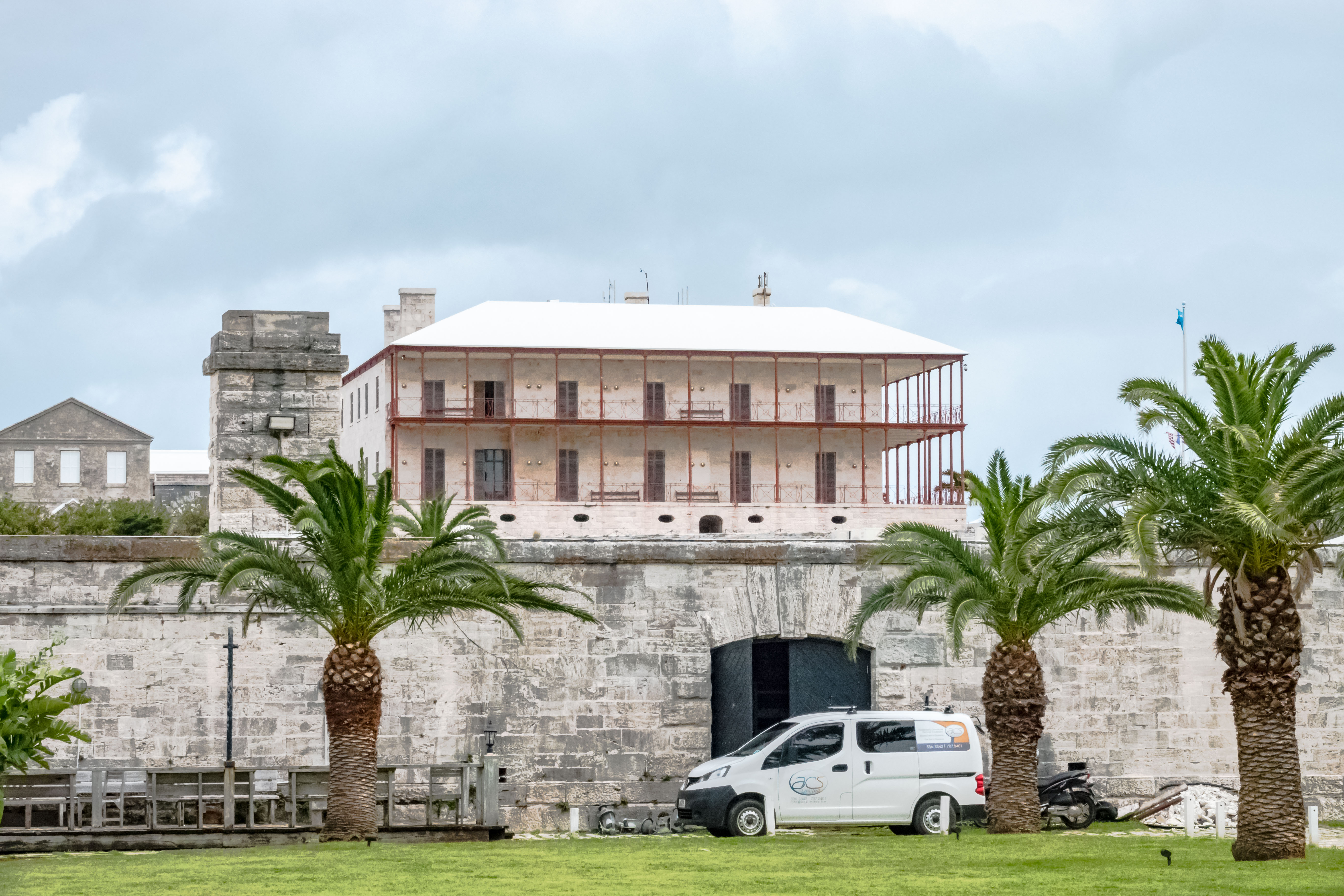
We then walked over to the actual Dockyard, which faces the bay. Nova Scotia granite was imported to make capstones in dockyards, because a more solid base material was needed to hold the winches which careened the ships on their sides. Most ships were repaired by careening on the shore in the dockyards bay. This worked until steamships replaced sailing ships in the 1880s. Although the steamships were around earlier, they were adopted late here, because while Bermuda has plenty of wind, there was no coal here.

On an interesting historical note to our American readers, a fleet of 9 ships were prepared here for the Battle of Bladensburg in the War of 1812, which led to the burning of Washington, D.C. The British soldiers who made that attack salvaged a set of Dolly Madison’s china, which is on display in a museum here.
We finished our tour with a look at the storehouses and barracks. The five shops in the back are where where masts we made for the ships out of imported wood. Those with the curved roofs were the gunpowder stores. The Great Eastern Storehouse has the clock tower, and held everything necessary to repair a ship, but it all had to be shipped in from England and Canada. From 1857 to 2017, all four clocks had a different time. The clocks were repaired in time for the America’s Cup yacht race in 2017. The towers also noted the high and low tides each day. The base closed in early 1950s, but by the 1970s, the Bermudean government began rehabbing dockyards as a tourist attraction.

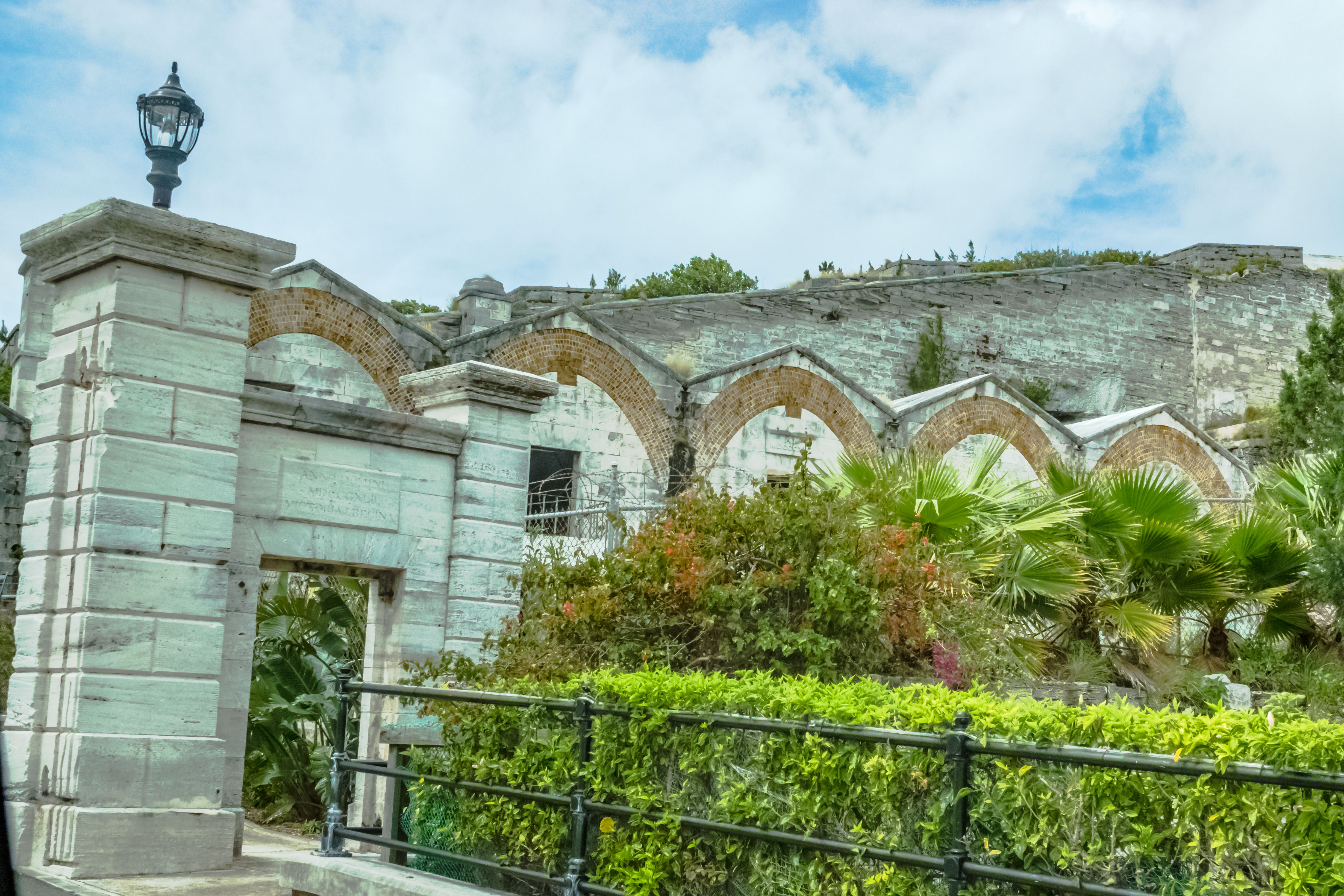
In the afternoon, we drove off on our tour of the island highlights. We drove along Harbour Drive, which is considered one of the most beautiful drives in the world. The widest point on the island is 1.2 miles wide, and the locals like to say that you’re never more that 3 minutes from the ocean.All of the houses are stunningly picturesque! They’re all painted in Easter egg colors, and each has a terraced white roof.

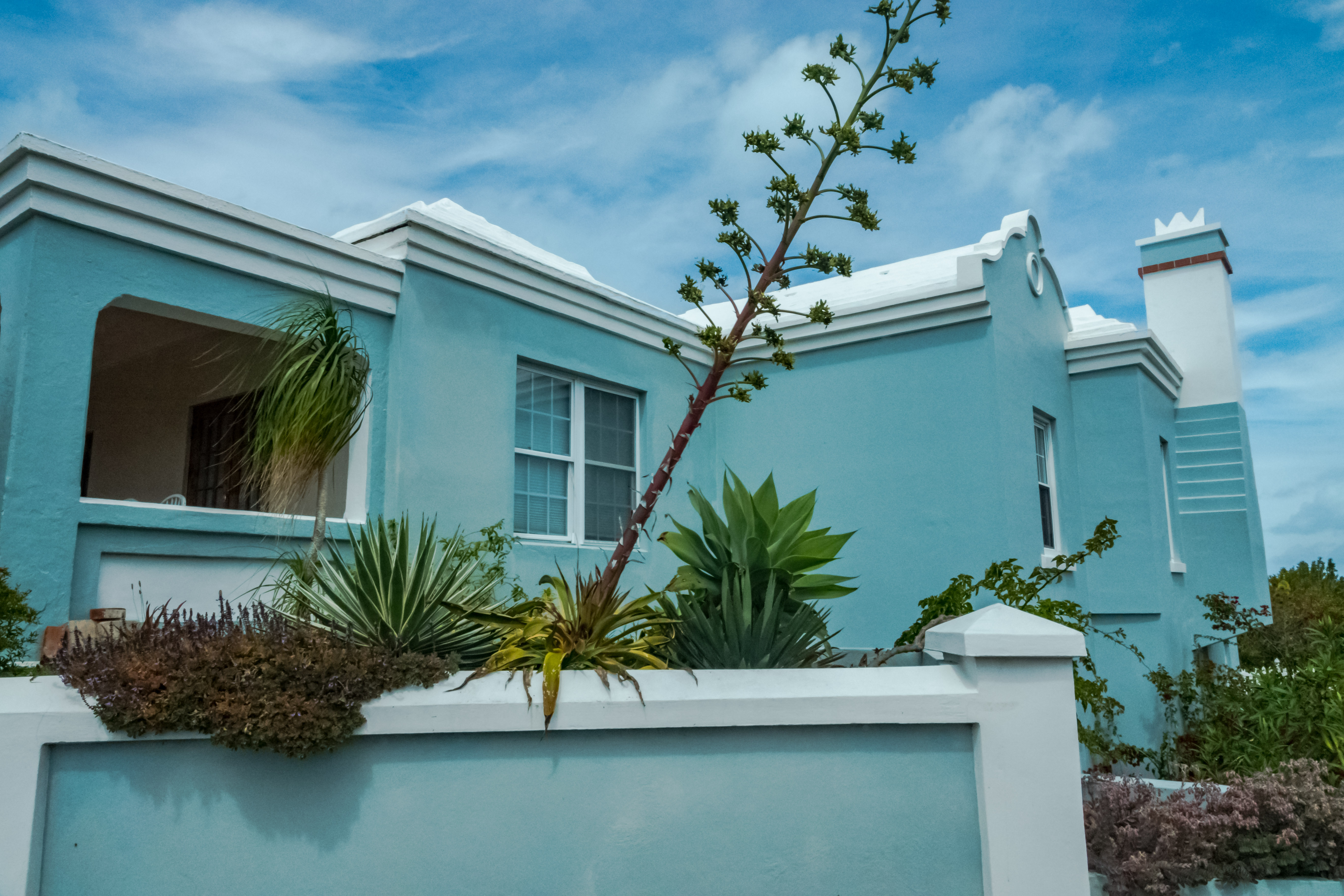


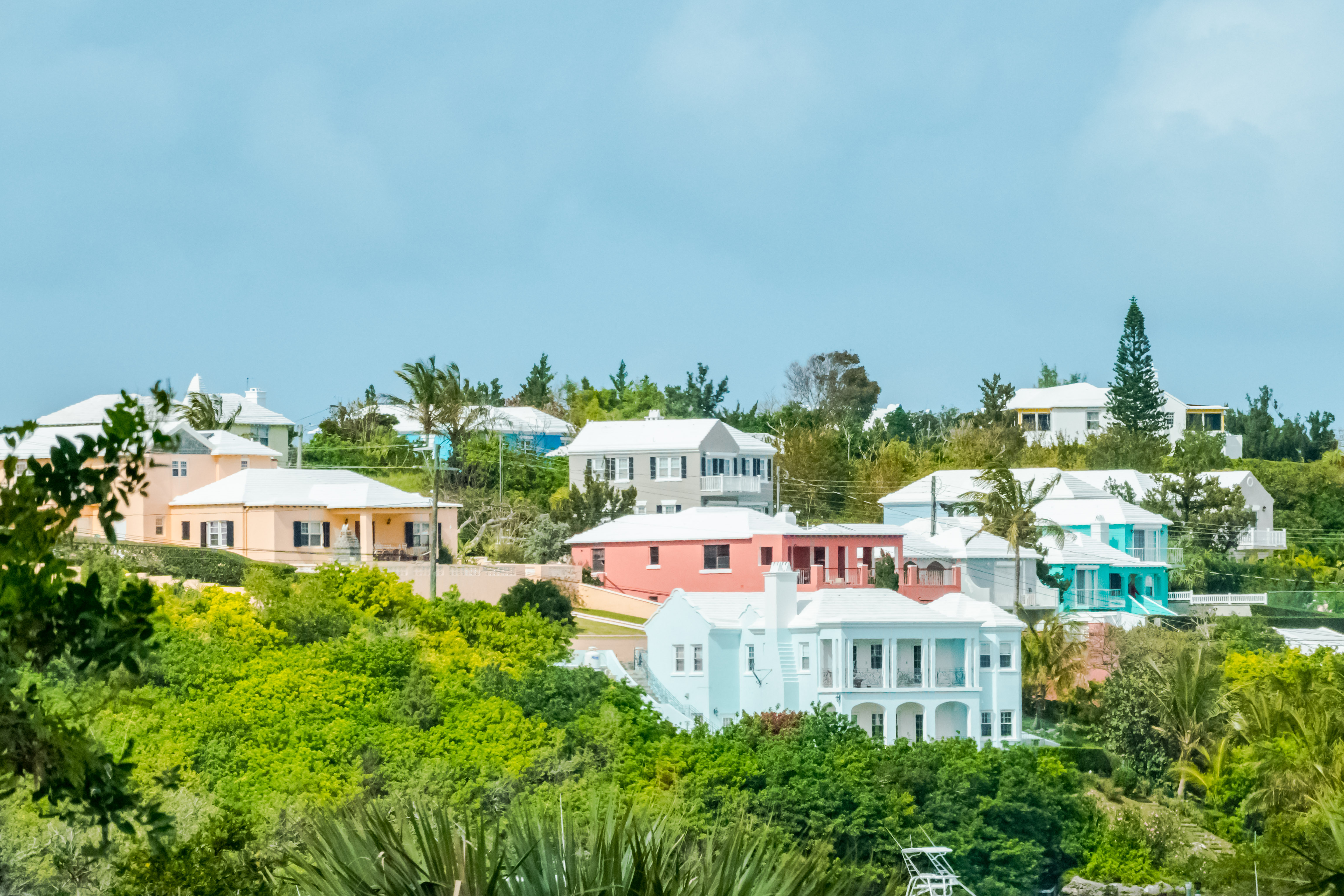
The island’s water supply depends on roof-captured water. If you running out of water, it costs $90 per 900 gallons to buy water. Although some people have wells, well water is not used for drinking. The collection pipes must be lined with lime, because the all sewer on the island is via septic tanks.

The widest point on the island is 1.2 miles wide, and the locals like to say that you’re never more that 3 minutes from the ocean. drove first through the town of Somerset, where we drove over a drawbridge which is the smallest drawbridge in the world. It’s just wide enough to allow the mast of a sailboat to pass through.


There are 9 parishes in Bermuda. Today, we will visit only 3: Southhampton, Pembroke and Hamilton. There used to be old US naval and Air Force bases here, but they were decommissioned and abandoned in the 1990s. While education through high school is mandatory, there is only a junior college on island. To attend university, young people must go to the mainland. As we pulled into Hamilton, we could see Sessions House with the clock tower. Our guide explained that in its parliamentary form of government, the Premier runs everything, while the Governor appointed by the Queen is merely a figurehead. There are 2 political parties, with the Labour Party currently in power. There are 11 senators and 36 members of Parliament for an island of 22 square miles.




After briefly stopping in Hamilton and walking along the harbor, we continued our drive down along the southern shore. Our first stop was to photograph the famed Horseshoe Beach with its pink sand. I can tell you that there weren’t many people there on this cold and wet spring day!
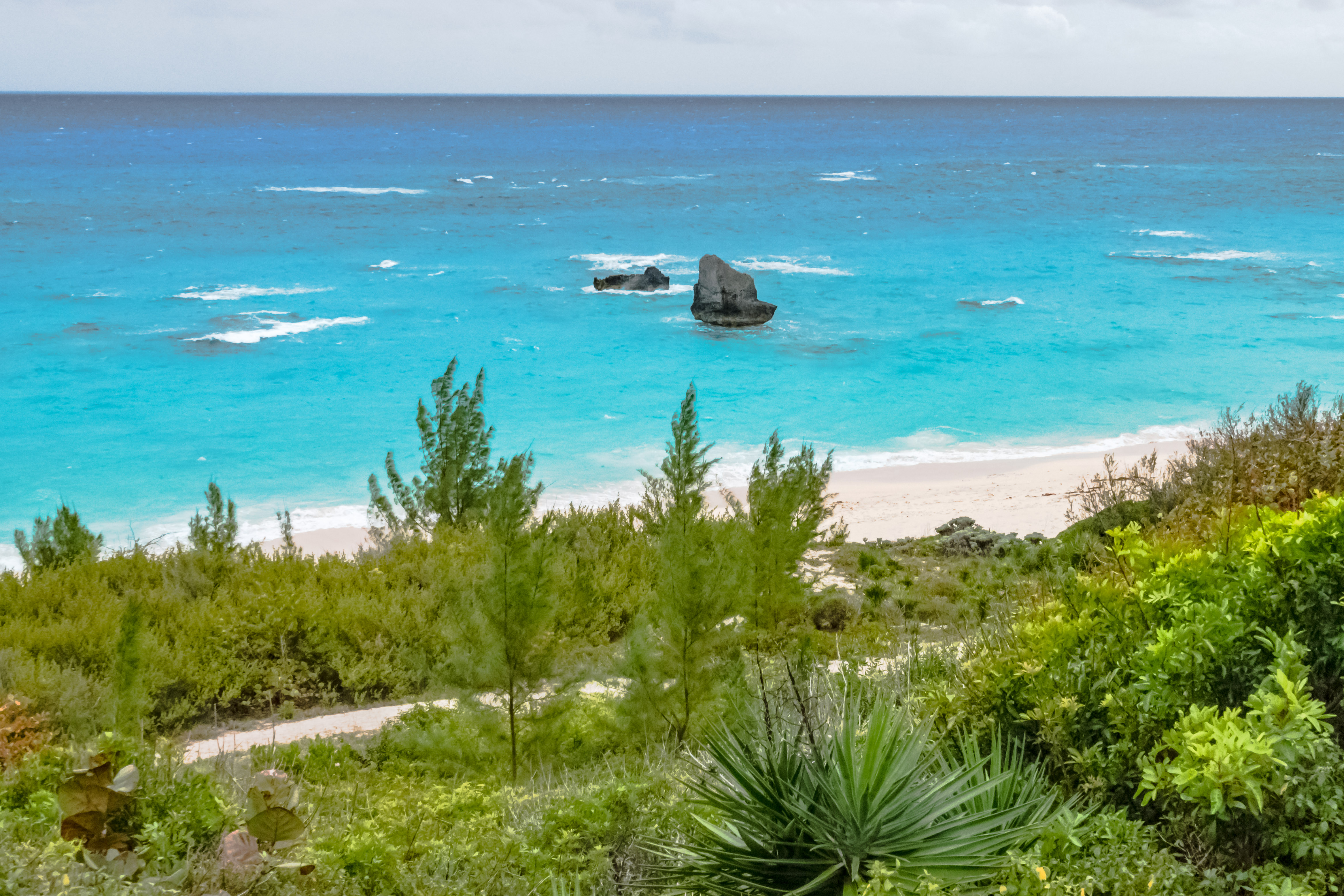

Our final stop for the day was at Gibbs Hill Lighthouse, which was built of cast iron in 1847. Queen Elizabeth visited here and proclaimed that the view was “fit for a Queen!” Then we headed back to the ship.

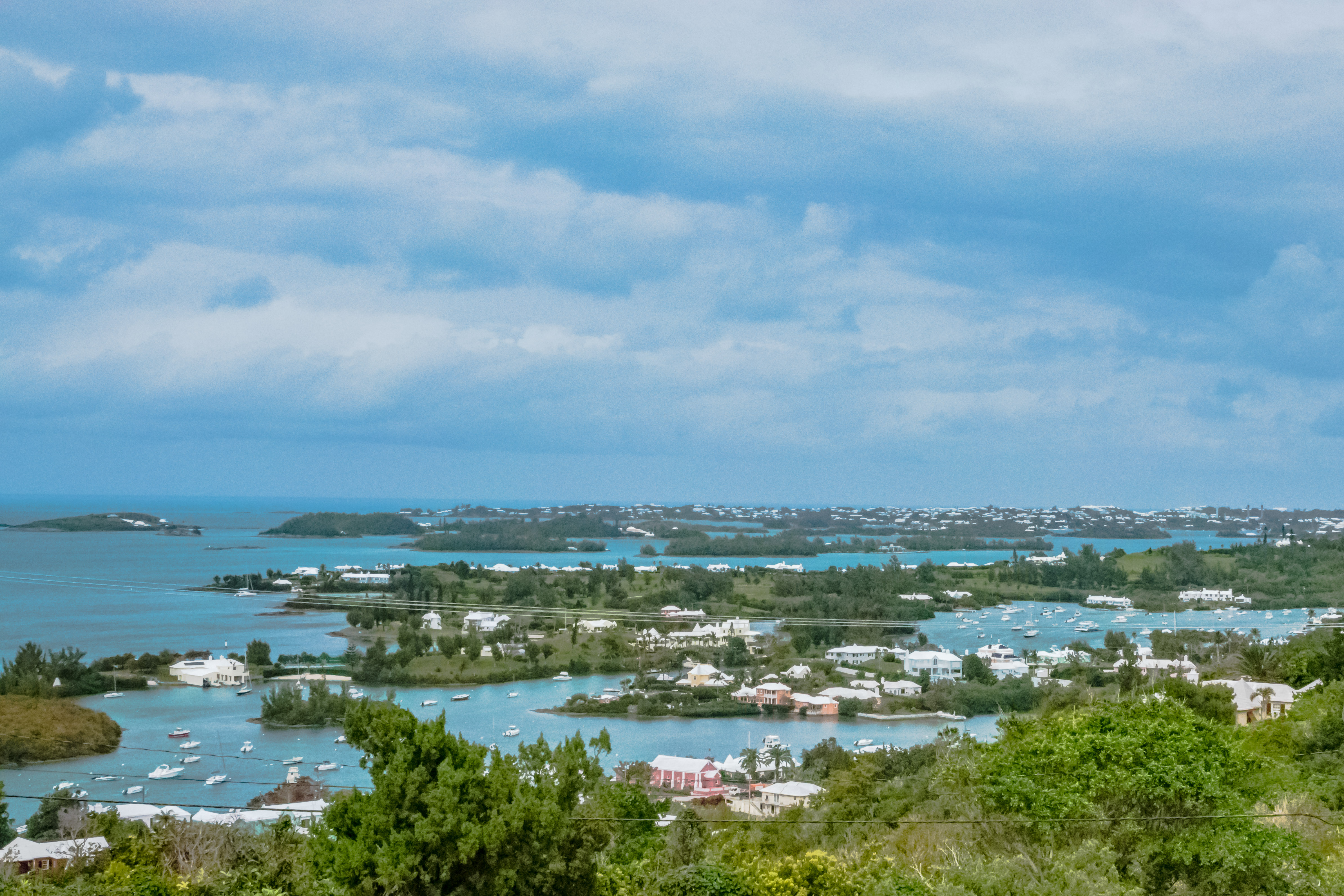

March 29th:
Today was a wet and wild day. Jim and I had planned to do a boat excursion whish would have taken us around some of the more scenic areas of the island, and then take the island ferry to the Aquarium and Zoo, which is supposed to be very good. However, we awoke to huge whitecaps just here in the harbor, so we decided it wouldn’t be too bright to go out on the water in small boats. Instead, Jim decided to go to the Bermuda National Museum housed in the old Keep in the Dockyards. I walked around the Dockyards and visited then craftwork collaborative run by local artists, and the glass blowing shop, which is conveniently housed in the same building as the shop which makes traditional Bermudean rum cakes in several flavors.
The real excitement of the day, however, was watching our Captain try to maneuver the ship out of port. The wind was blowing at about 40 knots straight at the port side of the ship, which effectively had the ship pinned to dock on the starboard side. The Captain prevailed, although it looked like he used every ounce of thrusting power he had aboard, and a couple of tugboats stayed close until it was sure that we were going to clear the dock. In the process, it looked like we kicked up half the sand on the bottom of the bay! We then had a lovely sail out through the islands into the maelstrom of the Atlantic. We’ll talk to you again when we hit the island of Faial, in the Azores in four days.



